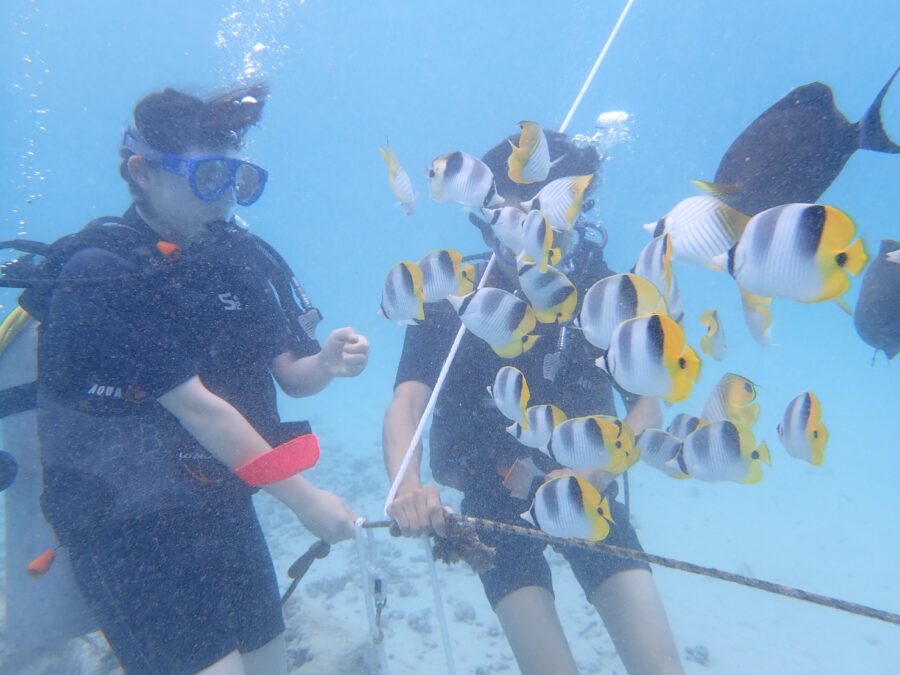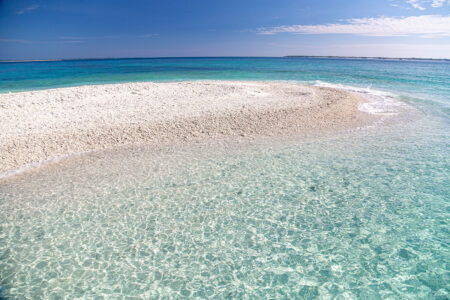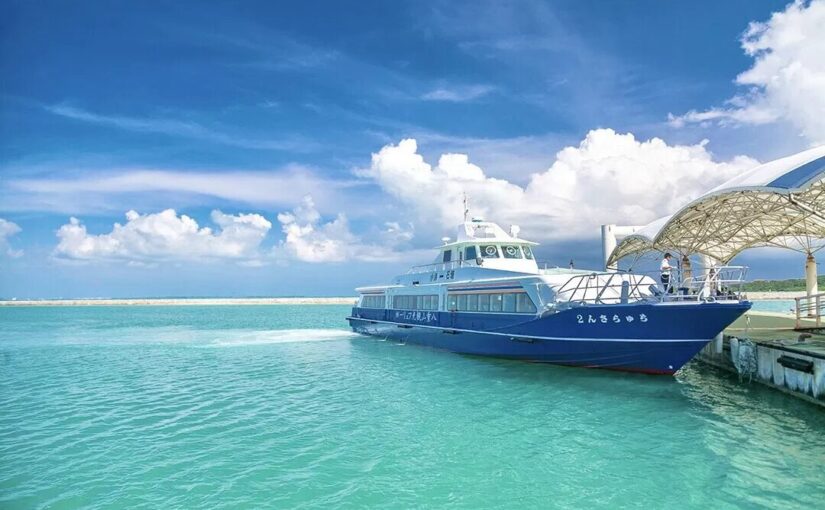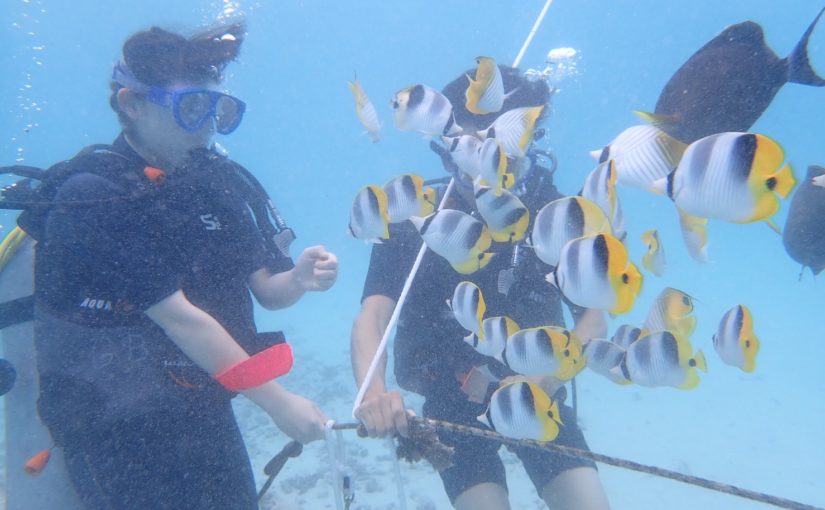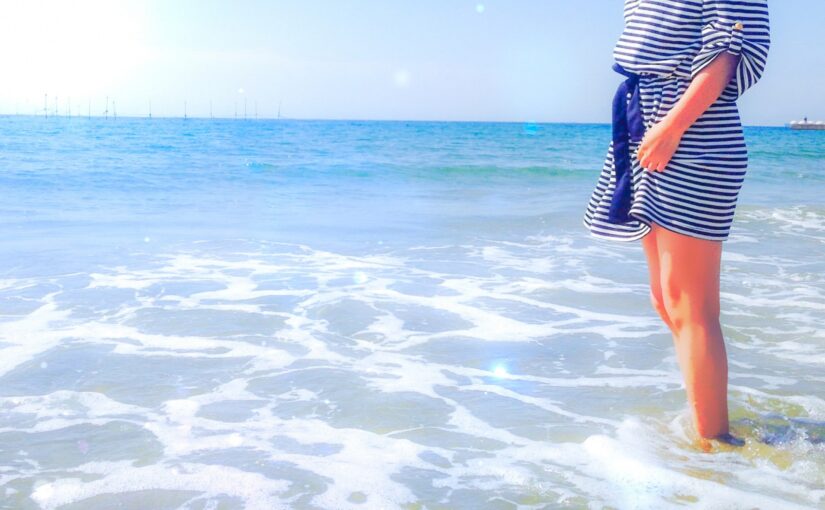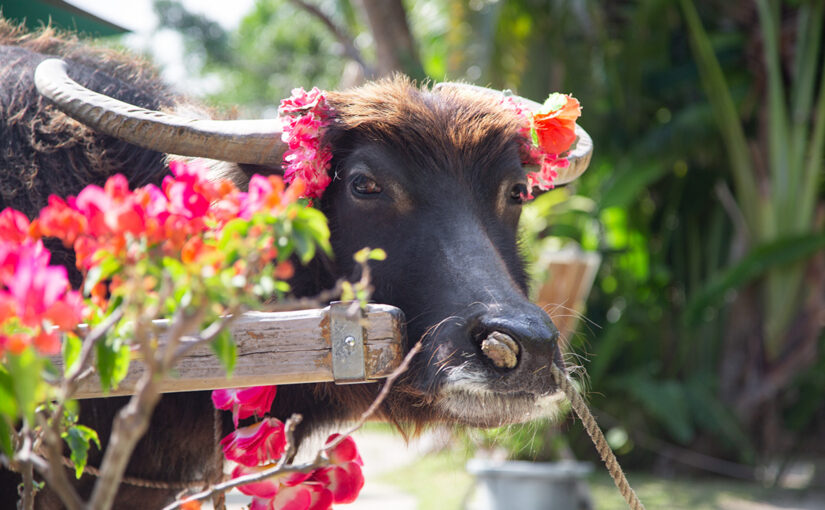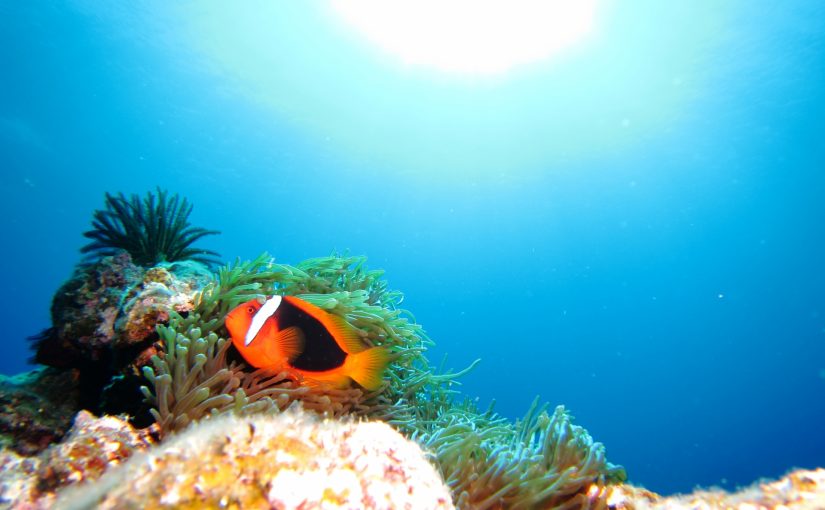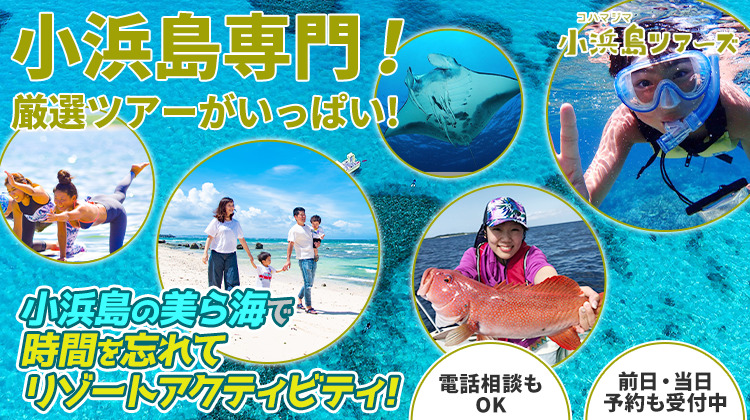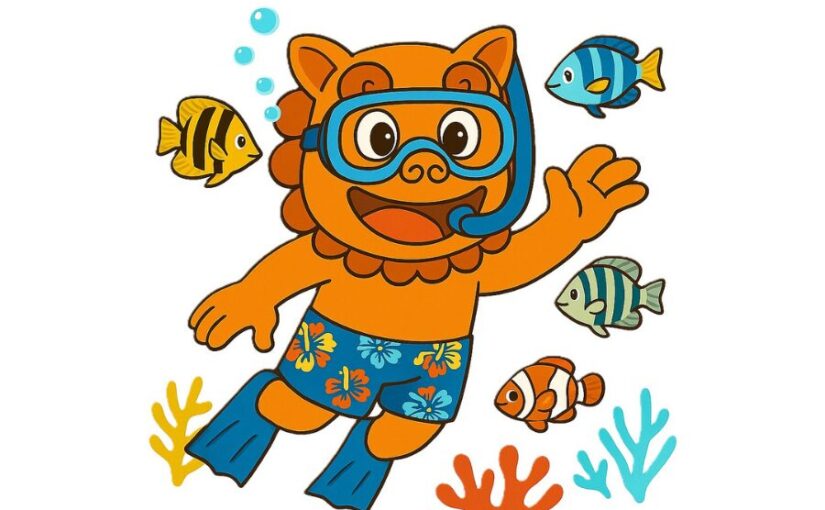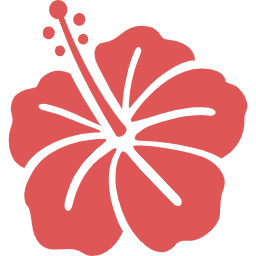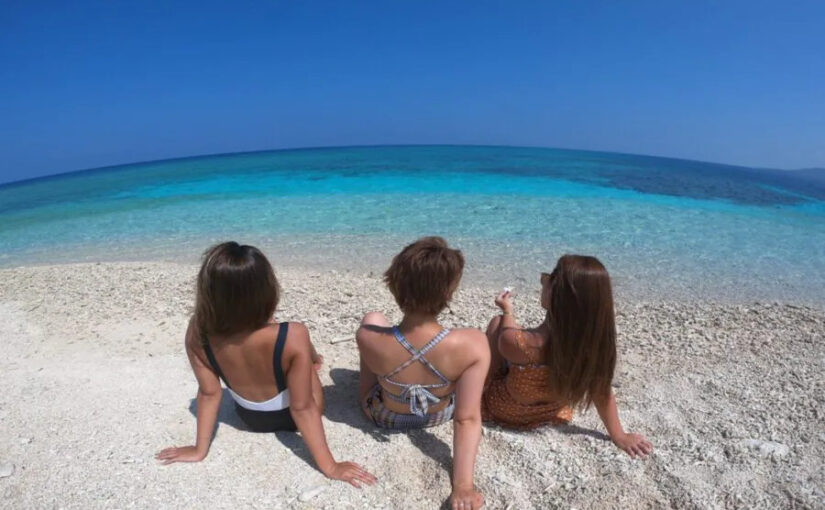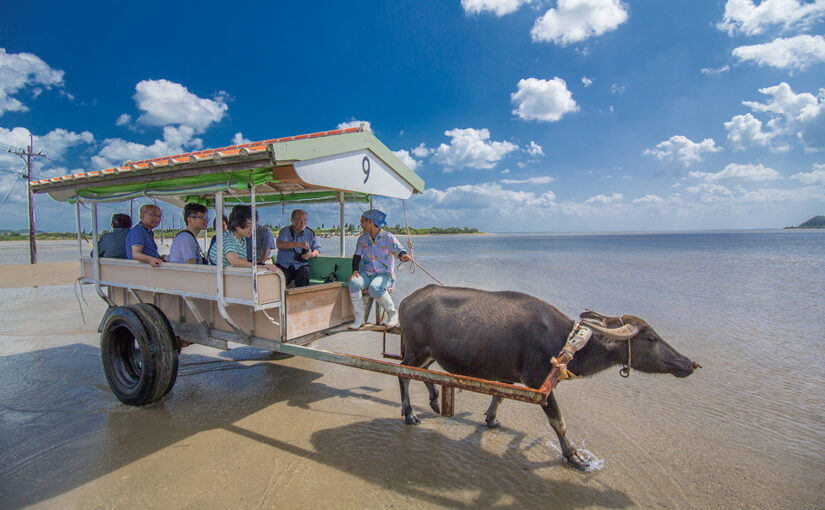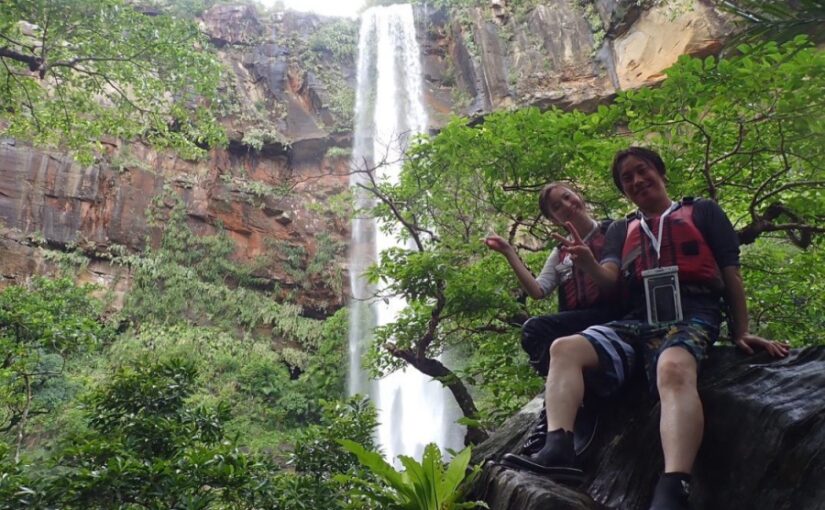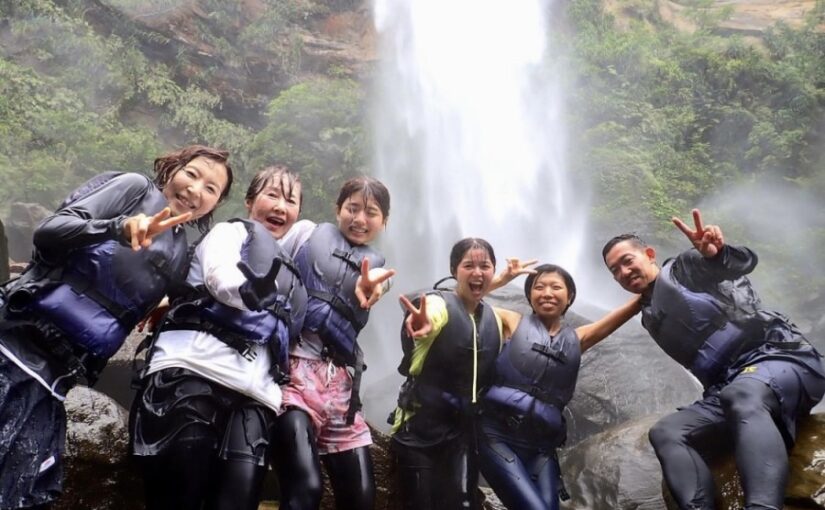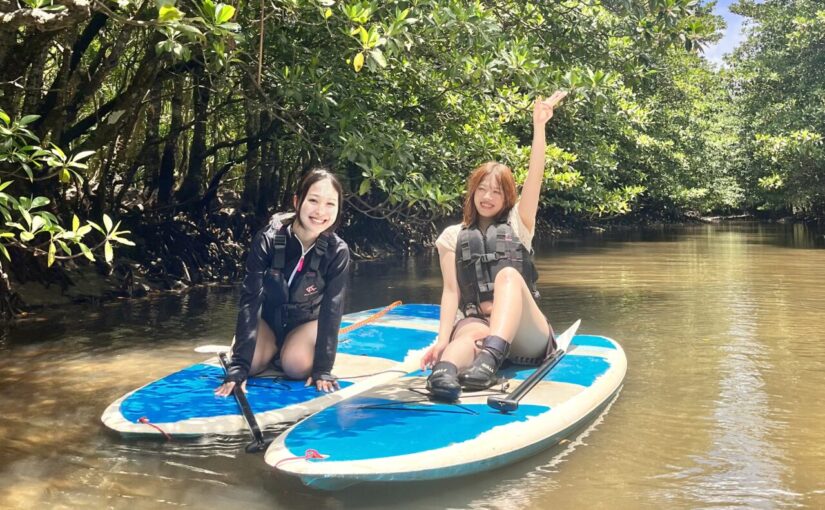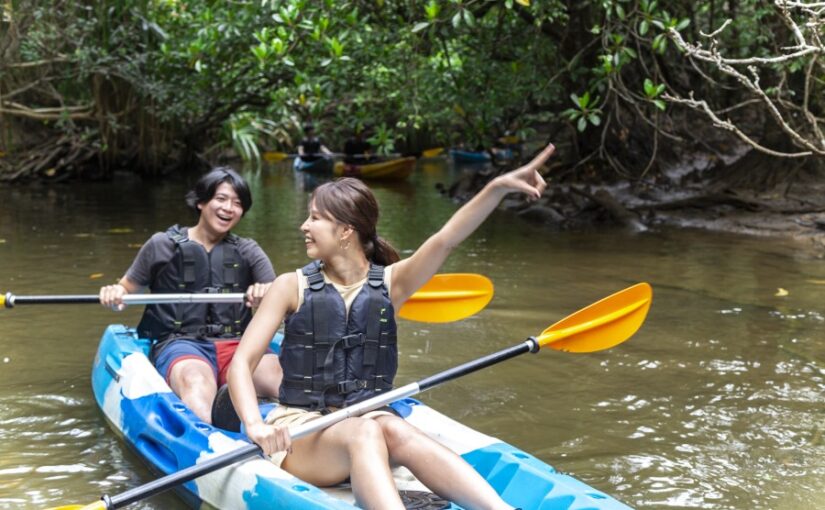There are many rare creatures in Iriomote Island! Let's go see Iriomote wild cat and coconut crab!
Table of Contents
- 1 Iriomote Island is a treasure house of rare creatures Introducing the creatures that can be seen by activity!
- 2 Creatures that can be seen while diving in Iriomote Island
- 2.1 Creatures that can be seen while diving in Iriomote Island (1) Manta Rays
- 2.2 Creatures that can be seen while diving in Iriomote Island (2) Hammerhead Shark
- 2.3 Creatures that can be seen while diving in Iriomote Island (3) Kobushime
- 2.4 Creatures that can be seen while diving in Iriomote Island 4) Heterodontus japonicus
- 2.5 Creatures seen while diving in Iriomote Island (5) Onikamasu
- 3 Creatures that can be seen while snorkeling in Iriomote Island
- 3.1 Creatures seen while snorkeling in Iriomote Island 6) Red Sea Slug
- 3.2 Creatures that can be seen while snorkeling in Iriomote Island (7) Southern Sea Slug
- 3.3 Creatures you can see while snorkeling in Iriomote Island (viii) Coral
- 3.4 Creatures that can be seen while snorkeling in Iriomote Island (9) Sea turtles
- 3.5 Creatures that can be seen while snorkeling in Iriomote Island 10) Jawfish
- 3.6 Creatures that can be seen while snorkeling in Iriomote Island (11) Clownfish
- 3.7 Creatures seen while snorkeling in Iriomote Island ⑫Scorpionfish
- 4 Toxic Animals and What to Do When Stung
- 4.1 Toxic Animals (1) Habu jellyfish
- 4.2 Toxic animals (2) Gonzui
- 4.3 Toxic animals (iii) Minnow Scorpionfish
- 4.4 Toxic animals (4) Onioderma lucidum
- 4.5 Toxic animals (5) Starfish
- 4.6 Toxic Animals (6) Madarauraumi hevi
- 4.7 Toxic animals (7) Amboyna mussel
- 4.8 Toxic Animals (viii) Leopard octopus
- 4.9 Toxic Animals (ix) skipjack tuna
- 4.10 Toxic Animals (10) Bumblebee anemone
- 5 Unusual creatures found in the jungle of Iriomote Island
- 5.1 Iriomote Island Jungle Creatures 1) coconut crab
- 5.2 Iriomote Island Jungle Creatures (2) Iriomote wildcat
- 5.3 Iriomote Island Jungle Creatures Crested serpent eagle
- 5.4 Iriomote Island Jungle Creatures 4) Yaeyama flying fox
- 5.5 Iriomote Island Jungle Creatures 5) Saxifraga habu
- 5.6 Iriomote Island Jungle Creatures 6) Yaeyama hibaa
- 5.7 Iriomote Island Jungle Creatures (7) Saxifraga
- 5.8 Iriomote Island Jungle Creatures 8) Yaeyama green tree frog
- 5.9 Iriomote Island Jungle Creatures (ix) Giant sessile butterfly
- 6 Rare plants found on Iriomote Island
- 7 Iriomote Island Other Creatures
- 7.1 Birds (1) Ryukyu Red-crowned Night-heron
- 7.2 Birds (2) White-bellied Warbler
- 7.3 Birds ③Doves
- 7.4 Mammals (1) Yonaguni horse
- 7.5 Mammals (2) Ryukyu wild boar
- 7.6 Amphibians (1) Semaru box turtle
- 7.7 Amphibians (2) Yaeyama tortoise
- 7.8 Reptiles: (1) Rock lizard
- 7.9 Reptiles 2) Iliomote mori grasshopper
- 7.10 Reptiles ③ Yaeyama honeydew dragonfly
- 8 You must take a boat to Iriomote Island! Let's buy a ferry ticket in advance!
- 9 Q&A about living things in Iriomote Island
- 10 summary
Iriomote Island is a treasure house of rare creatures
Introduction to living creatures that can be seen by activity!
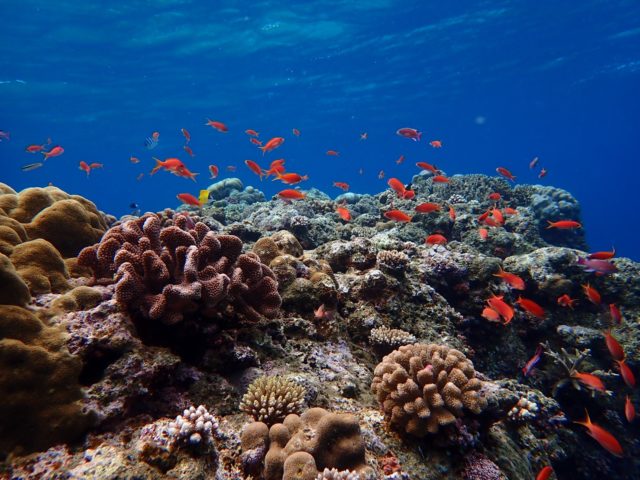
'TheGalapagos of the OrientIriomote Island is in the subtropical zone, and many creatures inhabit the sea, mangrove rivers, mountains, and various other spots.
You can see animals designated as special natural treasures, including the Iriomote wild cat, and rare plants that can be seen only in Iriomote Island.
Among them, this time,Creatures you should know about before visiting Iriomote Islandto the following.
◆Those who want to know the creatures living in Iriomote Island.
◆Those who want to know the ecology and charm of Iriomote Island's creatures.
◆For those who want to know popular activities in Iriomote Island
Creatures that can be seen while diving in Iriomote Island
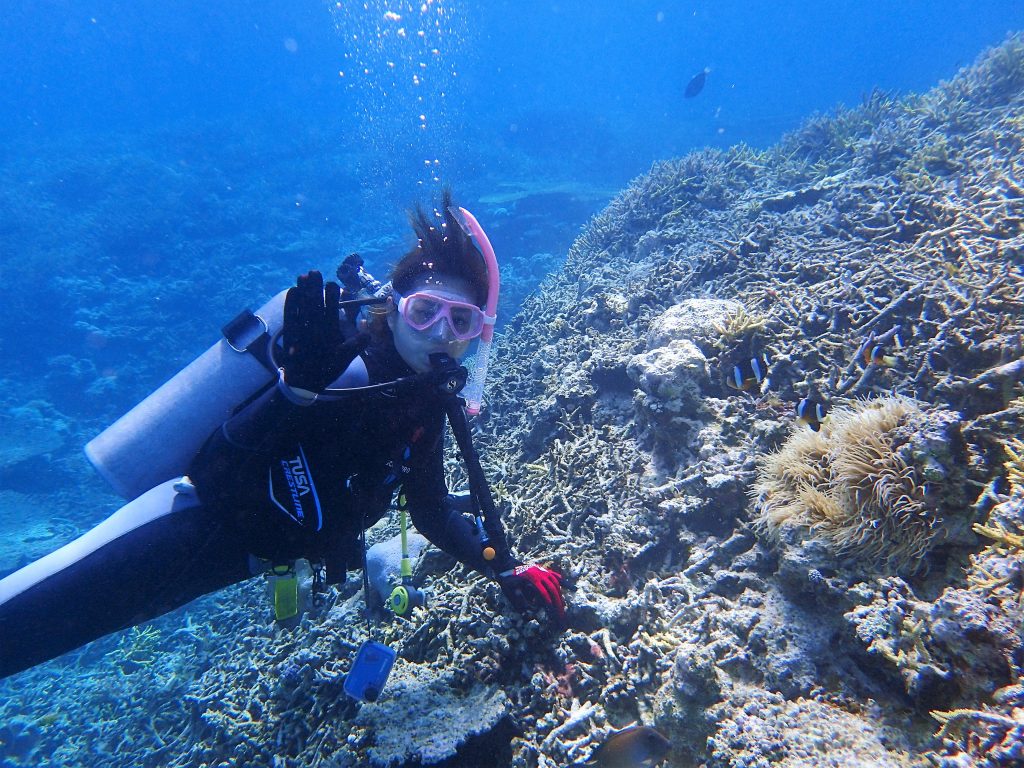
You can see various sea creatures in Iriomote Island. When I say sea creatures, I mean diving! Iriomote Island is one of the world'sDiving MeccaIt is famous as a
Know what kind of creatures are there, and actually find them on a dive... ♪
↓More about diving in Iriomote Island
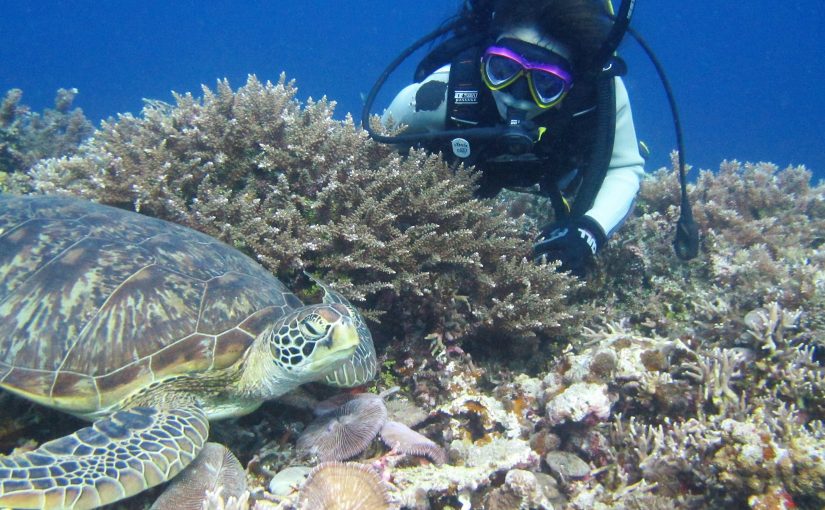 Iriomote Island Diving Tour Iriomote Island is a diving Mecca with one of the best coral reef areas in Japan. Everyone is welcome, from beginners to experienced divers! (8 in total) アクティビティの詳細を見る
Iriomote Island Diving Tour Iriomote Island is a diving Mecca with one of the best coral reef areas in Japan. Everyone is welcome, from beginners to experienced divers! (8 in total) アクティビティの詳細を見る ↓ Click here to read the article in conjunction with ↓ ↓
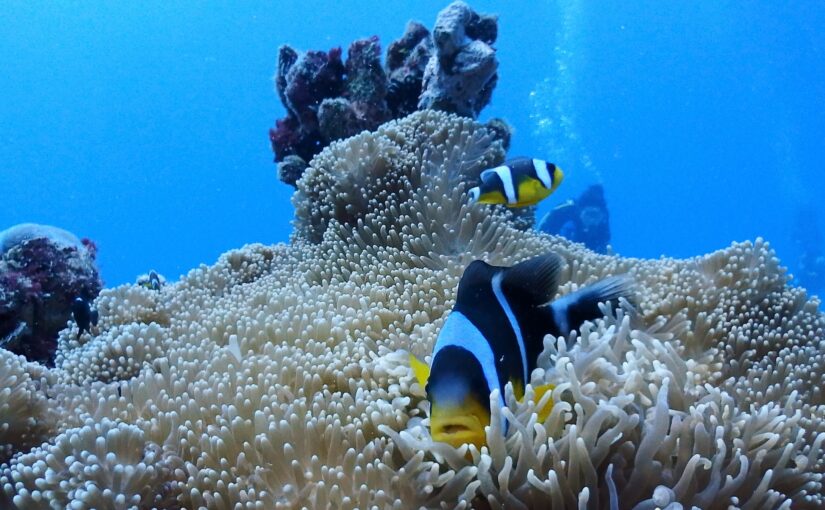 Is it true that Iriomote Island is the most popular place for diving? Which is recommended, Ishigaki Island or Iriomote Island?Iriomote Island, one of the world's leading islands in terms of the size and variety of coral reefs, stands out in the subtropical zone. Let's enjoy diving in this world-class beautiful Iriomote Island as much as you like.
Is it true that Iriomote Island is the most popular place for diving? Which is recommended, Ishigaki Island or Iriomote Island?Iriomote Island, one of the world's leading islands in terms of the size and variety of coral reefs, stands out in the subtropical zone. Let's enjoy diving in this world-class beautiful Iriomote Island as much as you like.
Creatures that can be seen while diving in Iriomote Island
(1) Manta
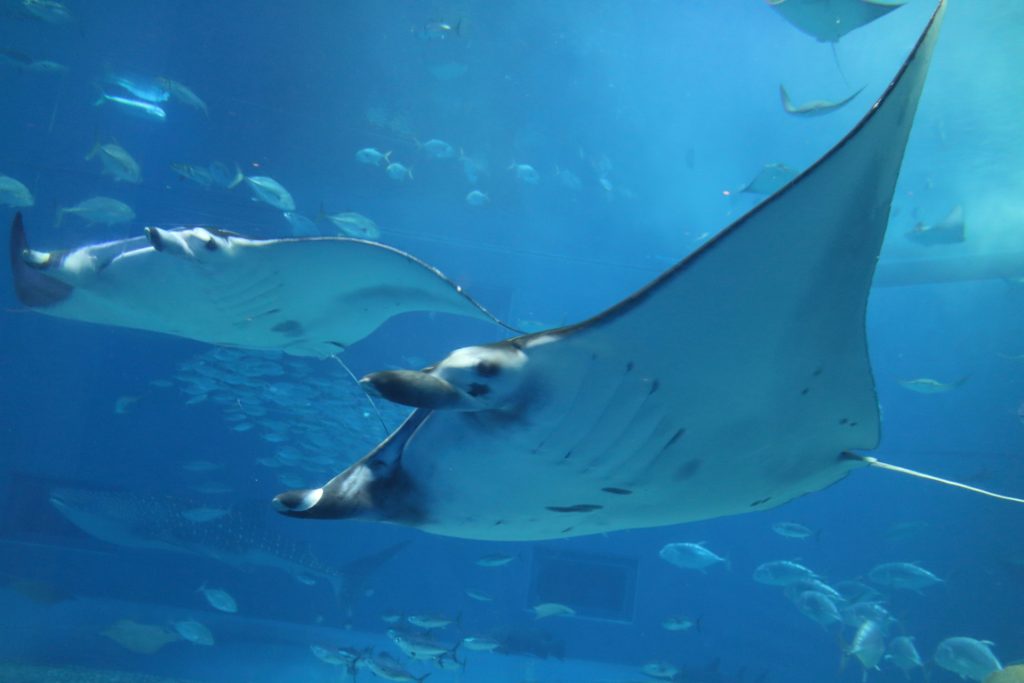
The world's largest ray, the manta ray, can reach 4 to 5 meters in size.A diver's dream fishIt is. It is a must-see when you come to Iriomote Island for diving!
*Can be seen at intermediate and advanced dive sites. It is also possible to see them at the famous Manta Scramble in Ishigaki Island.
High probability of encounter! Ishigaki Island Manta Tour
↓Learn more about manta rays
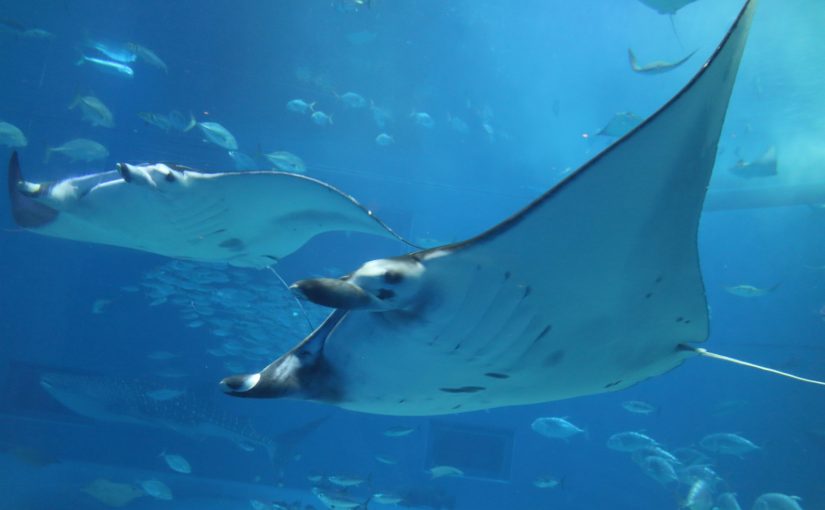 You can see manta rays in Iriomote Island! Thorough explanation of the season, points, and toursContents1 Manta Paradise in Yaeyama Islands2 What kind of creatures are manta rays3 How to meet manta rays in Yaeyama4 Best season to meet manta rays4.1 Spring: April to June4.2 Summer: July to August4.3 Autumn: September to November4.4 Winter: December to March5 West [...].
You can see manta rays in Iriomote Island! Thorough explanation of the season, points, and toursContents1 Manta Paradise in Yaeyama Islands2 What kind of creatures are manta rays3 How to meet manta rays in Yaeyama4 Best season to meet manta rays4.1 Spring: April to June4.2 Summer: July to August4.3 Autumn: September to November4.4 Winter: December to March5 West [...].
Creatures that can be seen while diving in Iriomote Island
(2) Hammerhead shark
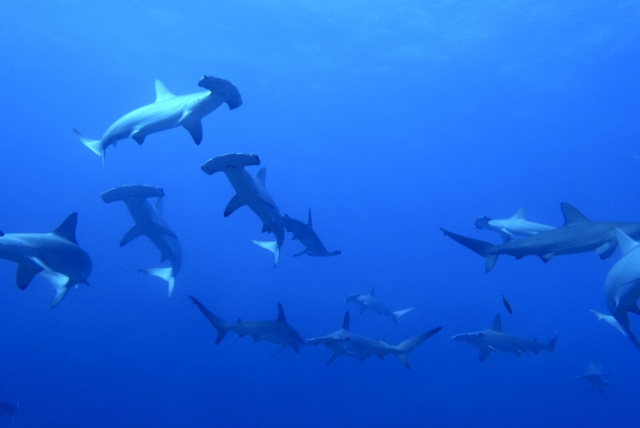
The Japanese name for this species is hammerhead shark, and it can be seen on Yonaguni Island from November to May, sometimes swimming in large schools of more than 100.
Creatures that can be seen while diving in Iriomote Island
(iii) Knobfish
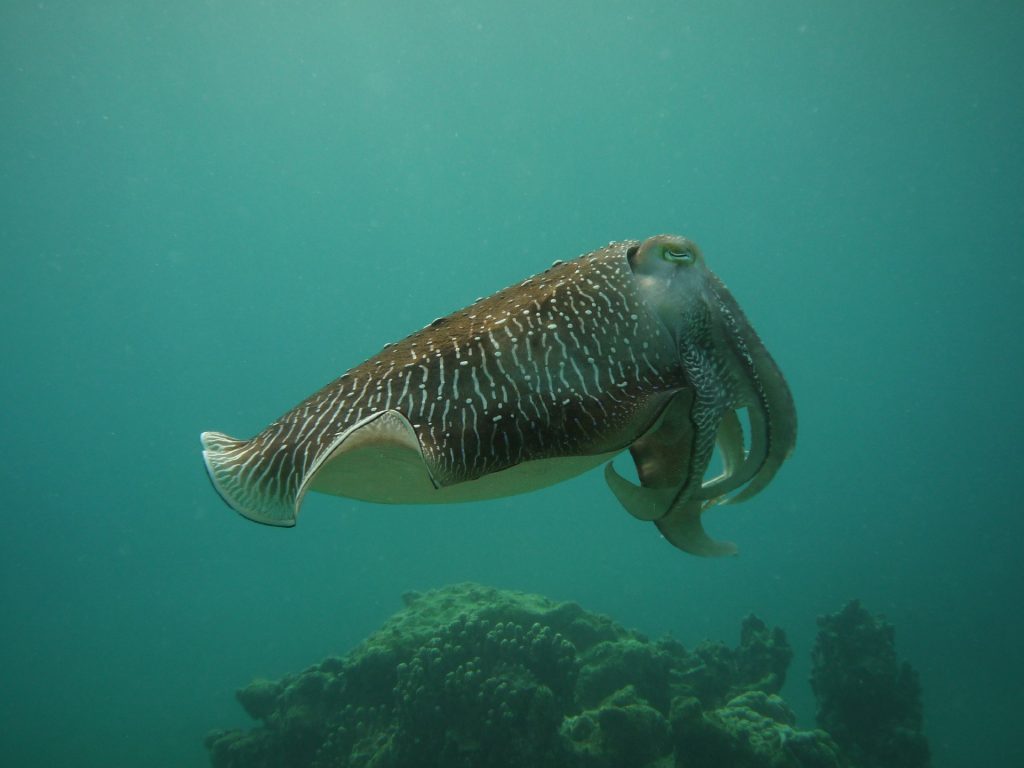
A large cuttlefish over 50 cm long, it lives on coral reefs and is highly prized for its edible value. In local dialect, it is called kubushimi.
Creatures that can be seen while diving in Iriomote Island
(4) Loban Shark
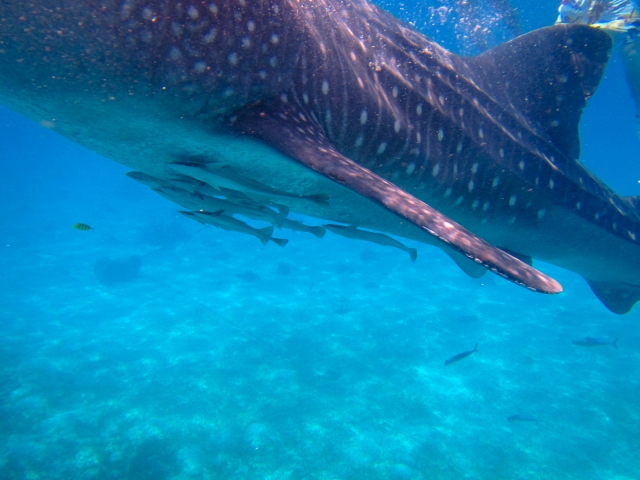
They feed on leftovers attached to manta rays and other large fishes by suckers with modified dorsal fins. In Iriomote IslandCan be caught on fishing tours.Yes, there is.
↓ Learn more about Iriomote Island Fishing ↓
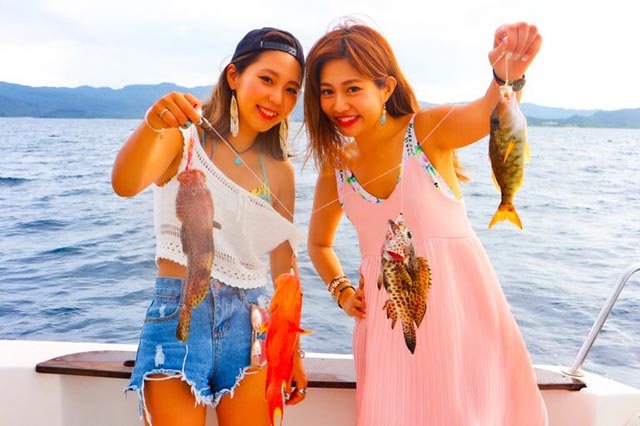 Iriomote Island Fishing Tour Anyone can enjoy fishing tours in Iriomote Island♪ The experience of catching dozens of colorful fish in a short time is exceptional! (4 in total) アクティビティの詳細を見る
Iriomote Island Fishing Tour Anyone can enjoy fishing tours in Iriomote Island♪ The experience of catching dozens of colorful fish in a short time is exceptional! (4 in total) アクティビティの詳細を見る ↓ Click here for the plan including Iriomote Island Fishing ↓ Click here for the plan including Iriomote Island Fishing
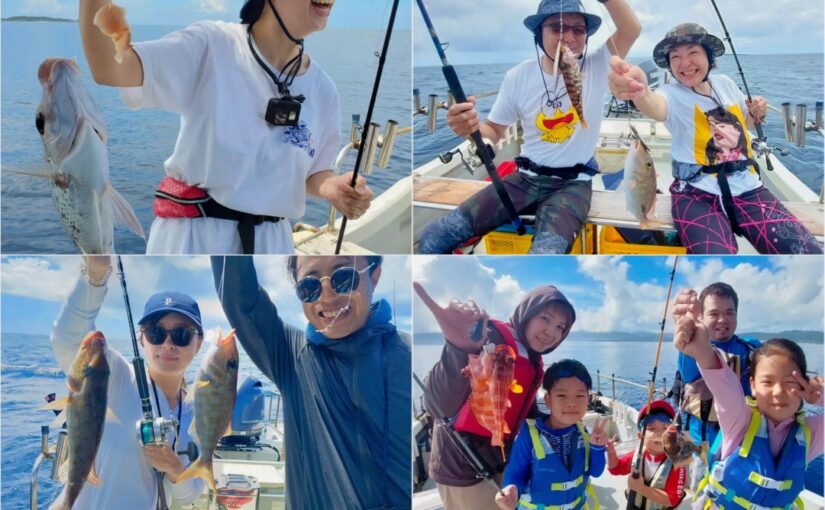 Iriomotejima Island/3 hours] Beginners are welcome! Fishing experience course in the sea near Iriomote Island Fish you caught can be served as it is for dinner☆Recommended for family trips (No.18)開始時間9:30 a.m. - 12:30 p.m.所要時間Approx. 3 hours14,000 yen
Iriomotejima Island/3 hours] Beginners are welcome! Fishing experience course in the sea near Iriomote Island Fish you caught can be served as it is for dinner☆Recommended for family trips (No.18)開始時間9:30 a.m. - 12:30 p.m.所要時間Approx. 3 hours14,000 yen
Creatures that can be seen while diving in Iriomote Island
(5) Onika barracuda (Onika masou)
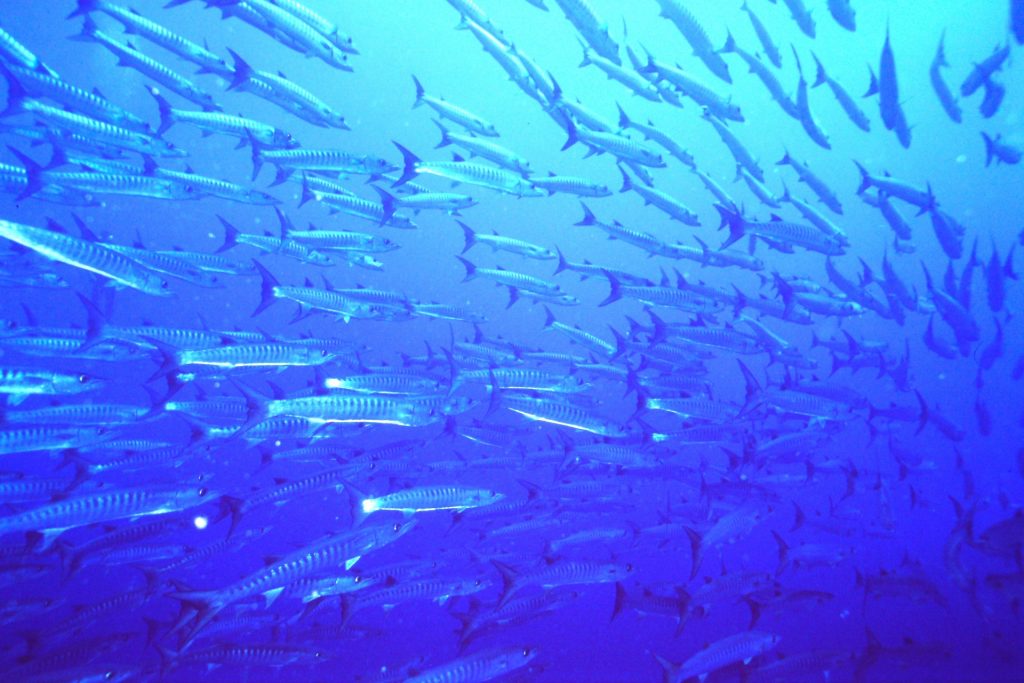
It is famous as a ferocious fish paracuda and can attack people. The large ones are about 2 meters in size.
Creatures that can be seen while snorkeling in Iriomote Island
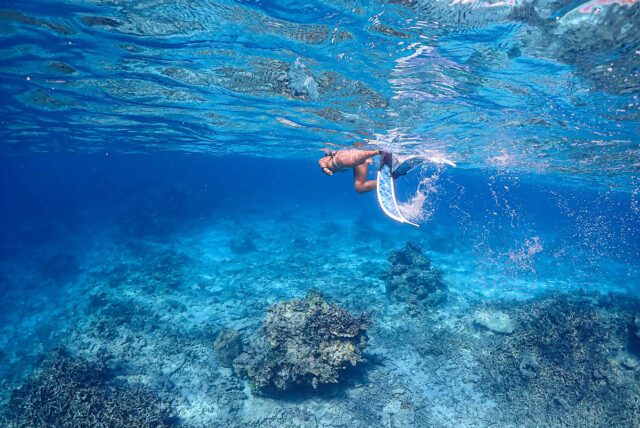
Snorkeling can be enjoyed more easily by people of all ages than diving!
Can be seen even in shallow waterColorful sea creatures typical of the subtropical zoneâ
↓ Learn more about snorkeling in Iriomote Island ↓
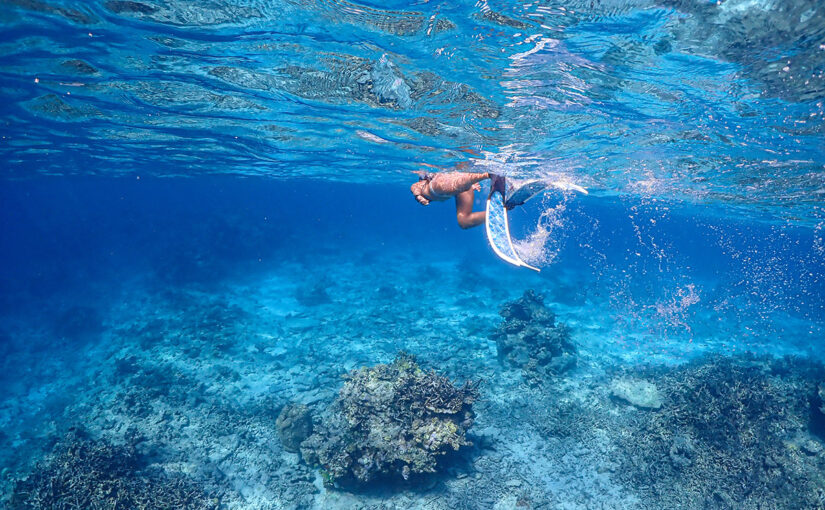 Iriomote Island Snorkeling Tour The area around Iriomote Island is a sacred place for snorkeling! The experience of swimming with colorful coral reefs and over 100 species of fish is sure to impress you! (40 total) アクティビティの詳細を見る
Iriomote Island Snorkeling Tour The area around Iriomote Island is a sacred place for snorkeling! The experience of swimming with colorful coral reefs and over 100 species of fish is sure to impress you! (40 total) アクティビティの詳細を見る ↓ Click here for the plan including snorkeling in Iriomote Island ↓ Click here for the plan including snorkeling in Iriomote Island
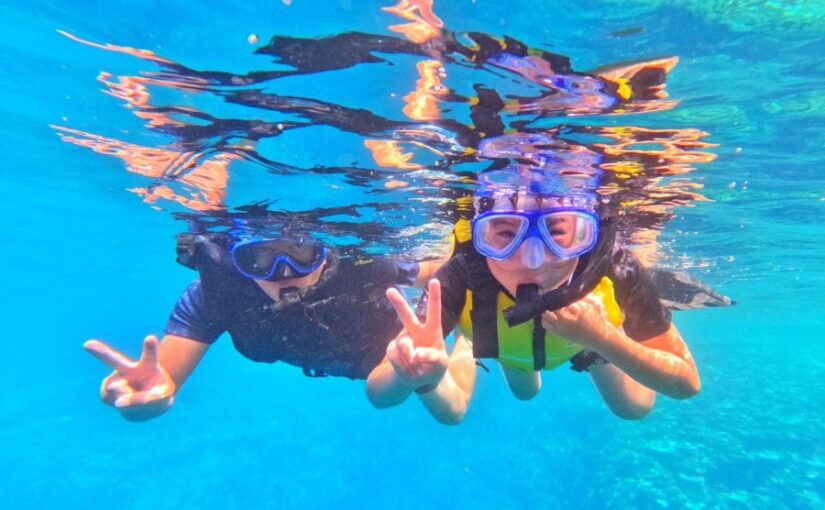 Special Winter SALE 【Iriomotejima/2.5 hour】May be able to see Nemo and Crush! Spectacular Snorkeling Tour in Iriomote Island, a World Natural Heritage Site ★Free Photo (No.19)開始時間9:00-11:30 / 13:00-15:30所要時間Approx. 2.5 hours8,900 yen →directional marker or indicator7,900suffix for names of swords, armour, musical instruments, etc.
Special Winter SALE 【Iriomotejima/2.5 hour】May be able to see Nemo and Crush! Spectacular Snorkeling Tour in Iriomote Island, a World Natural Heritage Site ★Free Photo (No.19)開始時間9:00-11:30 / 13:00-15:30所要時間Approx. 2.5 hours8,900 yen →directional marker or indicator7,900suffix for names of swords, armour, musical instruments, etc.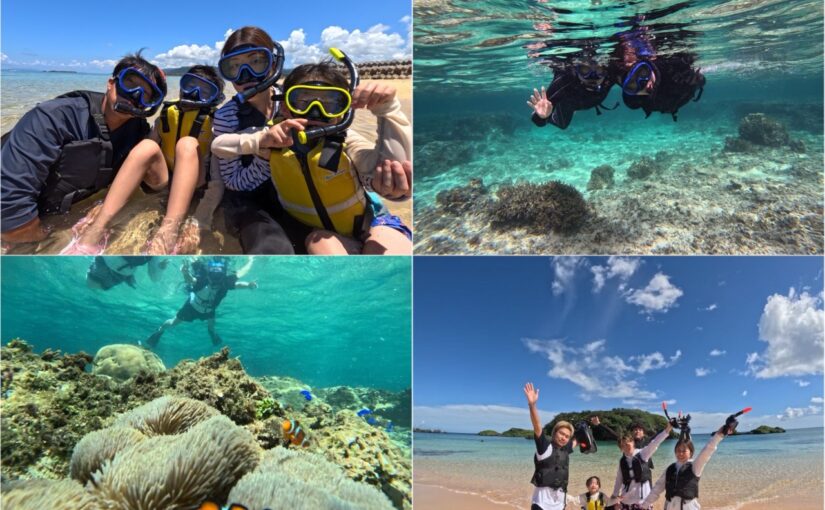 Winter Special SALE 【Iriomotejima / 2 hours】This tour is like a natural aquarium where children and adults alike can enjoy themselves! Tropical Snorkeling Tour★Free Photo(No.22)開始時間9:00-11:30 / 13:00-15:30所要時間Approx. 2 hours7,900 yen →directional marker or indicator6,900suffix for names of swords, armour, musical instruments, etc.
Winter Special SALE 【Iriomotejima / 2 hours】This tour is like a natural aquarium where children and adults alike can enjoy themselves! Tropical Snorkeling Tour★Free Photo(No.22)開始時間9:00-11:30 / 13:00-15:30所要時間Approx. 2 hours7,900 yen →directional marker or indicator6,900suffix for names of swords, armour, musical instruments, etc.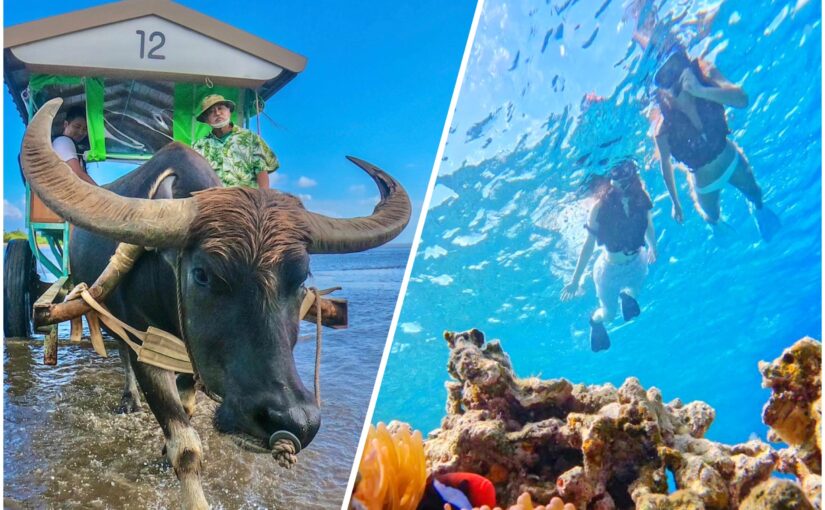 Iriomotejima Island / 1 Day] Participation OK from 3 years old! Buffalo Car "Yubu Island" Sightseeing & Tropical Snorkeling Greedy Tour ★Photo Free (No.99)開始時間9:00-15:30所要時間Approx. 6.5 hours13,000 yen →directional marker or indicator11,500suffix for names of swords, armour, musical instruments, etc.
Iriomotejima Island / 1 Day] Participation OK from 3 years old! Buffalo Car "Yubu Island" Sightseeing & Tropical Snorkeling Greedy Tour ★Photo Free (No.99)開始時間9:00-15:30所要時間Approx. 6.5 hours13,000 yen →directional marker or indicator11,500suffix for names of swords, armour, musical instruments, etc.↓ Click here to read the article in conjunction with ↓ ↓
 Here is the best place for snorkeling in Iriomote Island! Introducing 9 beaches recommended by local residents!Speaking of Iriomote Island, the clear blue sea is the best! We will tell you about beaches recommended by local guides! Some secret beaches are not well known to tourists...!
Here is the best place for snorkeling in Iriomote Island! Introducing 9 beaches recommended by local residents!Speaking of Iriomote Island, the clear blue sea is the best! We will tell you about beaches recommended by local guides! Some secret beaches are not well known to tourists...!
Creatures that can be seen while snorkeling in Iriomote Island
6. Red Sea Slug
It is said that there are more than 650 species of nudibranchs in Japan, and many of them inhabit Iriomote Island, including Yaeyama.
Creatures that can be seen while snorkeling in Iriomote Island
7) Southern spotted boxfish
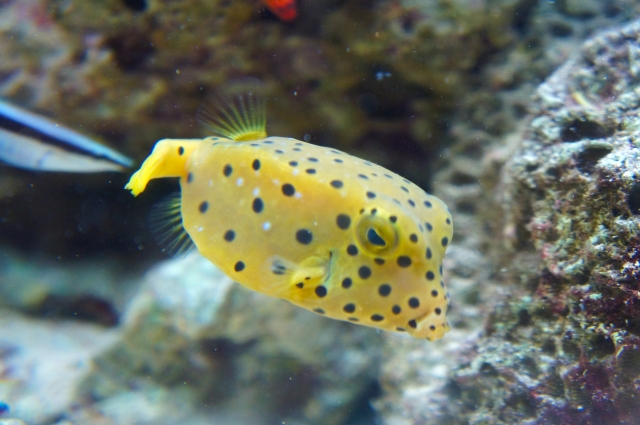
Juvenile fish are small, colossal, and have a cute polka-dot pattern, and when they sense danger, they produce ink.
Creatures that can be seen while snorkeling in Iriomote Island
(viii) coral
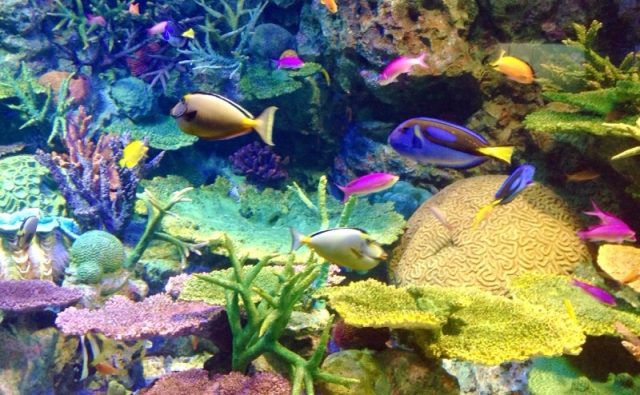
Coral reefs in Yaeyama are truly a jewel box. Among them, the blue coral in Shiraho, Ishigaki Islandlargest scale in the northern hemisphereIt is.
Corals look like plants, but they are animals in the same family as sea anemones. Many small individual corals, called polyps, come together to form a whole.
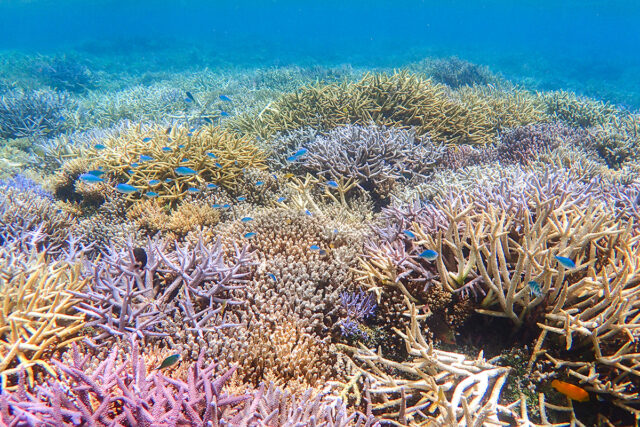
Coral bodies are filled with zooplankton called zooxanthellae. The zooxanthellae use sunlight to photosynthesize and provide the coral with the nutrients it needs. Of course, corals themselves also use their tentacles to catch and eat food.
Creatures that can be seen while snorkeling in Iriomote Island
(ix) Sea turtles
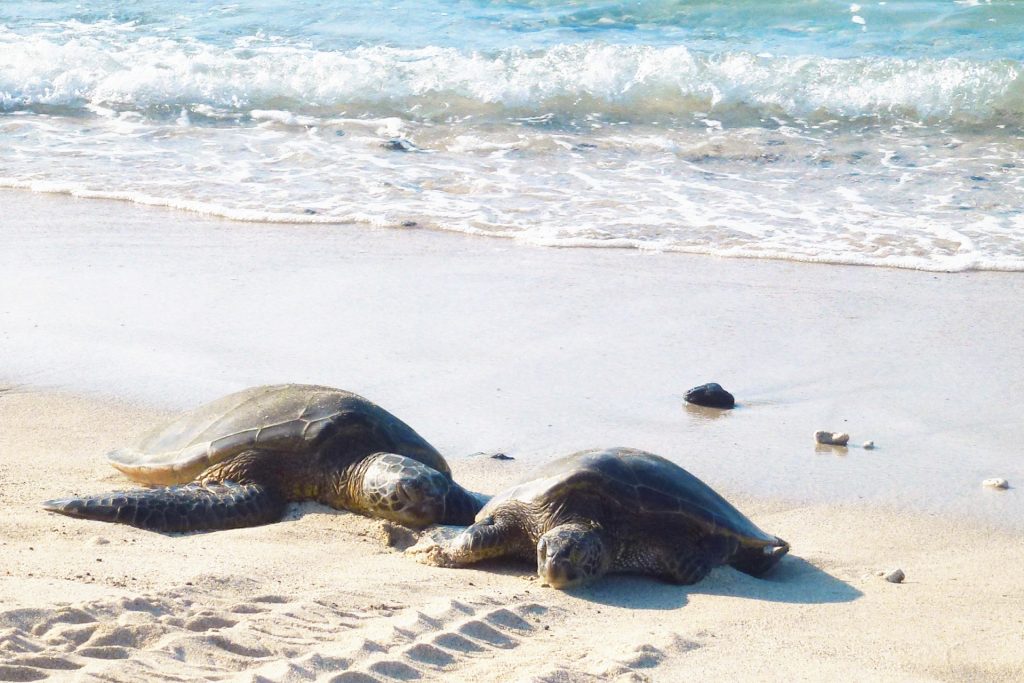
They land on the beach in Yaeyama and lay eggs.Kurushimaconducts research on sea turtles, and it is possible to see all three species of sea turtles found in Japan.
Also in Iriomote IslandSea turtles lay eggs on the beach called "Mikiri-no-hamaThey come to the
↓Click here for snorkeling plans that include the Ear Cut-off Beach.
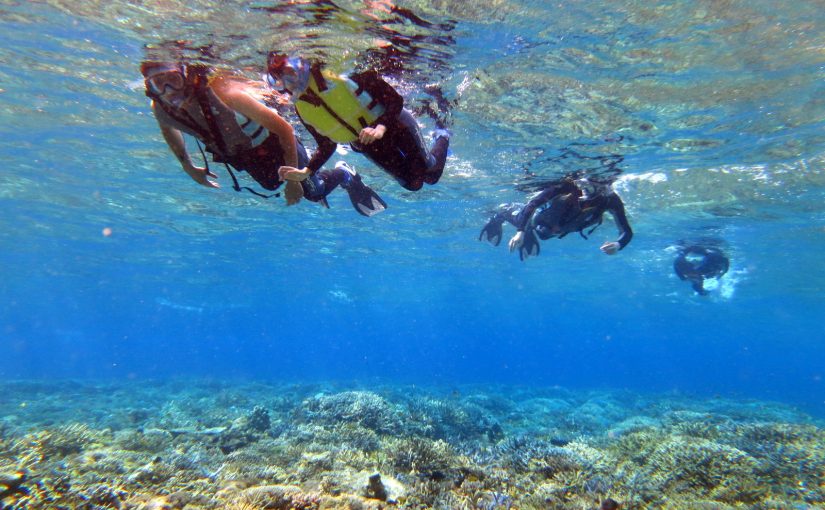 World Heritage Iriomote Island] The secret beach where sea turtles come ashore! Snorkeling in a private atmosphere (No.23)開始時間9:00-11:30 / 13:00-15:30所要時間Approx. 2.5 hours6,900 yen
World Heritage Iriomote Island] The secret beach where sea turtles come ashore! Snorkeling in a private atmosphere (No.23)開始時間9:00-11:30 / 13:00-15:30所要時間Approx. 2.5 hours6,900 yen↓Snorkeling plan to encounter sea turtles
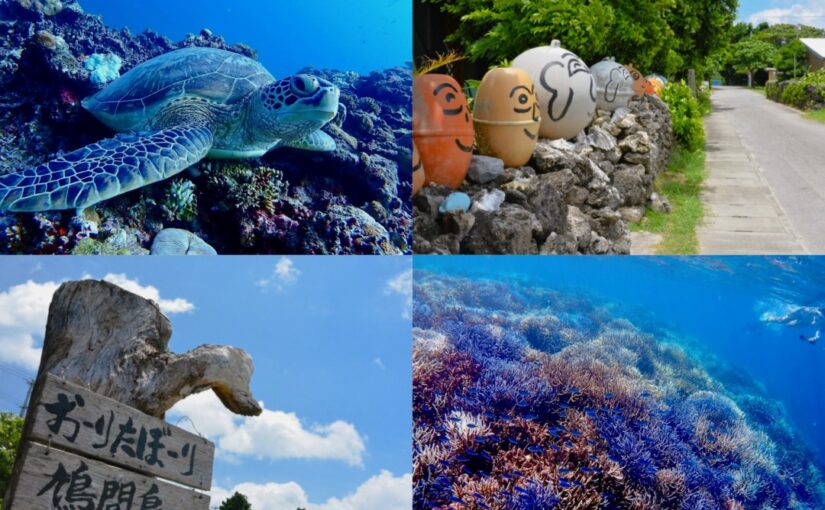 Iriomotejima Island/3.5 hours] Sightseeing & Snorkeling Tour to "Hatoma Island," an unspoiled and unexplored island where you can play in the afternoon You will encounter sea turtles with high probability! You will be impressed by one of the best transparency in Yaeyama♪ (No.94)開始時間12:00 - 15:30所要時間Approx. 3.5 hours11,000 yen
Iriomotejima Island/3.5 hours] Sightseeing & Snorkeling Tour to "Hatoma Island," an unspoiled and unexplored island where you can play in the afternoon You will encounter sea turtles with high probability! You will be impressed by one of the best transparency in Yaeyama♪ (No.94)開始時間12:00 - 15:30所要時間Approx. 3.5 hours11,000 yen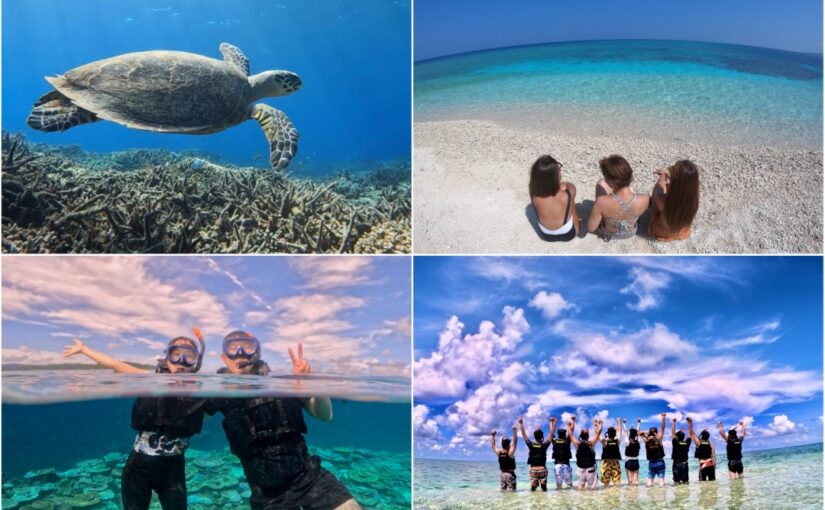 Iriomotejima Island/2 hours] Same-day reservation OK! You may see sea turtles☆Miracle Island "Barasu Island" Snorkeling Tour★Free Photo & Pick-up (No.122)開始時間9:00-11:30 / 13:00-15:30所要時間Approx. 2 hours8,900 yen →directional marker or indicator7,900suffix for names of swords, armour, musical instruments, etc.
Iriomotejima Island/2 hours] Same-day reservation OK! You may see sea turtles☆Miracle Island "Barasu Island" Snorkeling Tour★Free Photo & Pick-up (No.122)開始時間9:00-11:30 / 13:00-15:30所要時間Approx. 2 hours8,900 yen →directional marker or indicator7,900suffix for names of swords, armour, musical instruments, etc.
Creatures that can be seen while snorkeling in Iriomote Island
10 Jawfish
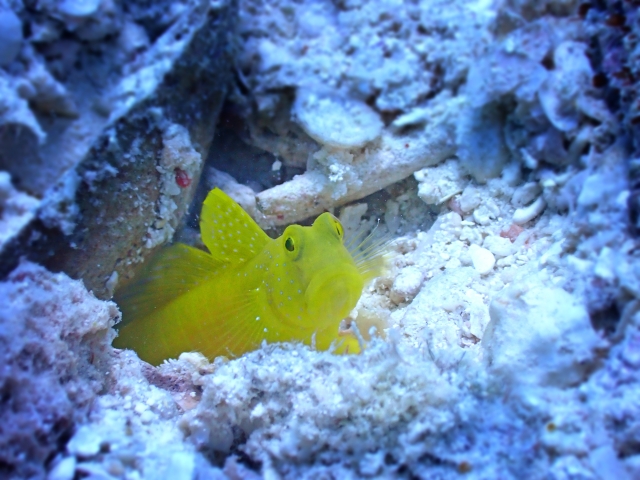
They live in burrows on the seafloor, on the border between rocks and gravel. They are very cute creatures with large mouths.
Creatures that can be seen while snorkeling in Iriomote Island
(11) Clownfish
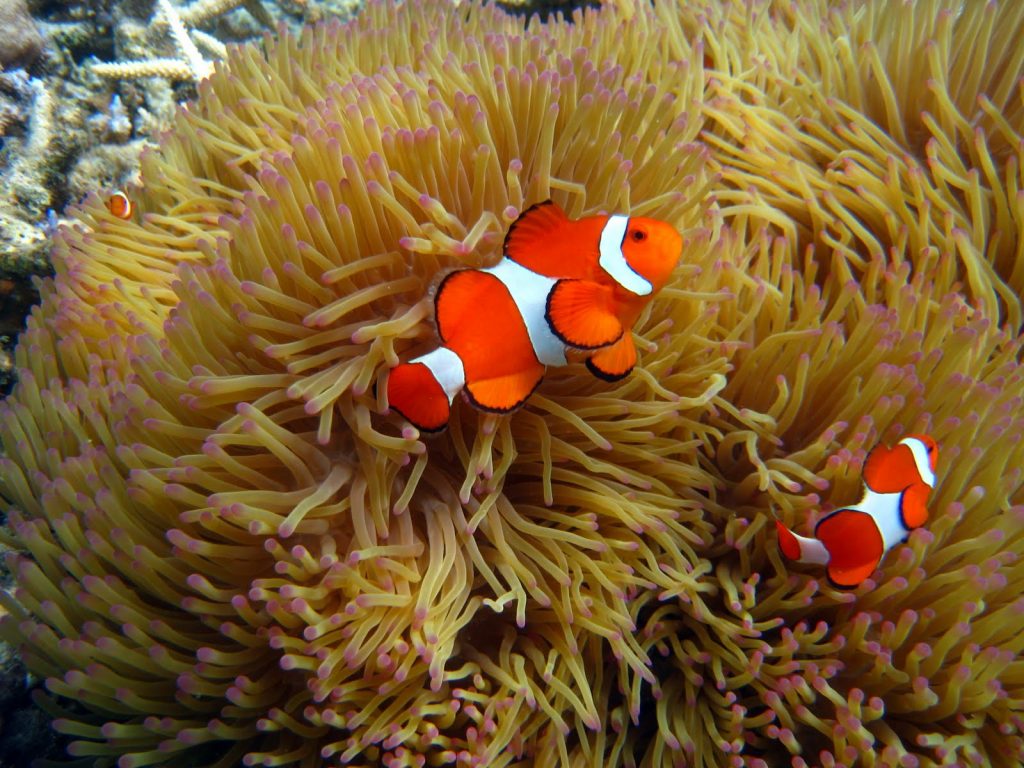
Clownfish became famous by the movie "Finding Nemo". In Iriomote Island, five kinds of clownfish can be seen.
Symbiotic with sea anemones, with beautiful patternsidol of the seaIt is.
↓Click here for snorkeling where you can meet Nemo.
 Special Winter SALE 【Iriomotejima/2.5 hour】May be able to see Nemo and Crush! Spectacular Snorkeling Tour in Iriomote Island, a World Natural Heritage Site ★Free Photo (No.19)開始時間9:00-11:30 / 13:00-15:30所要時間Approx. 2.5 hours8,900 yen →directional marker or indicator7,900suffix for names of swords, armour, musical instruments, etc.
Special Winter SALE 【Iriomotejima/2.5 hour】May be able to see Nemo and Crush! Spectacular Snorkeling Tour in Iriomote Island, a World Natural Heritage Site ★Free Photo (No.19)開始時間9:00-11:30 / 13:00-15:30所要時間Approx. 2.5 hours8,900 yen →directional marker or indicator7,900suffix for names of swords, armour, musical instruments, etc.
Creatures that can be seen while snorkeling in Iriomote Island
⑫Scattered coral fish (Coradion melanopus)
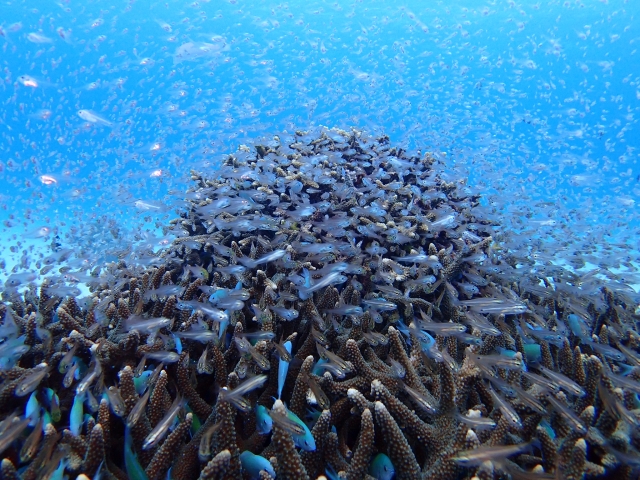
They live in large schools on coral reefs. Their bodies are transparent.
Toxic Animals and What to Do When Stung
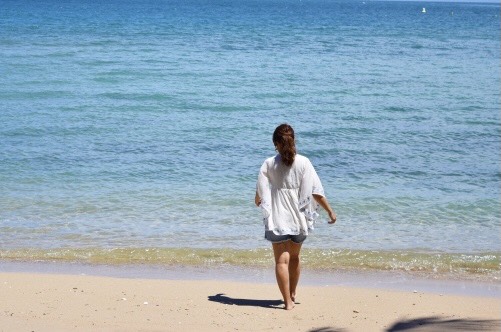
There are some toxic creatures in the sea of Iriomote Island. This time, we will tell you what to do in case you are stung by a poisonous creature.
Toxic Animals
(1) Habu jellyfish
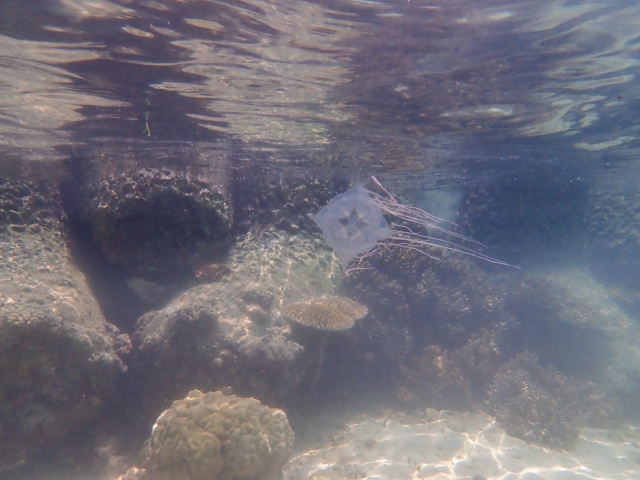
This jellyfish occurs from May to October. They can come to shallow areas as shallow as 50 cm deep, but are translucent and difficult to spot, so care should be taken when snorkeling and other activities. Stings are very painful and sometimes cause cardiopulmonary arrest due to shock, and there have been deaths.
precautionary measures
Swimming in a habu jellyfish anti-invasion net and wearing a wetsuit or long-sleeved T-shirt to reduce skin exposure will prevent the venom needle from reaching the skin in the event of a sting (it does not completely prevent damage).
What to do if stung
- Get out of the water immediately. Never rub the affected area.
- Vinegar (vinegar)
- Gently remove the tentacles with your hands
- If it hurts, cool it with ice or cold water.
Toxic Animals
(2) Gongsui
It is a poisonous fish with sharp poisonous spines on its fins and is disliked by anglers as an "outsider. A member of the catfish family, it is about 10-25 cm in length and has a striking design with two yellow lines running along its blackish body. They are nocturnal and migrate near rocky shorelines and embankments, so when night fishing, if you hit a school of Gonzui, you will catch a lot of them.
They have sharp poisonous spines called "poison spines" on their dorsal and right and left pectoral fins, and when they sting you, you feel a searing, intense pain.
What to do if stung
- Remove large visible spikes.
- Soak the affected area in 40-45°C hot water or put hot water in a plastic bag, etc. and apply it to the affected area.
Toxic Animals
(iii) minuscule scorpionfish
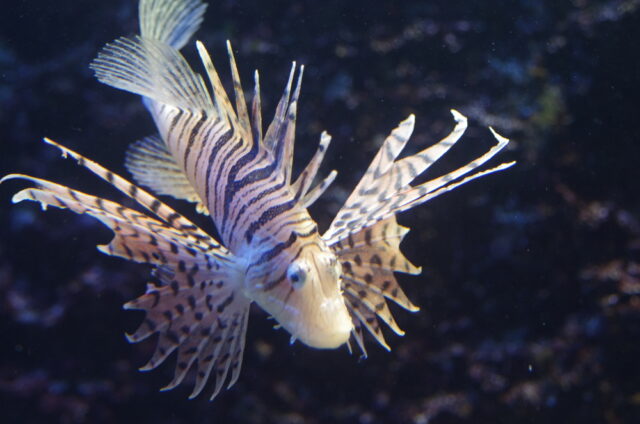
It has venom on its dorsal, ventral and anal fins. They move slowly and do not run away when approached. When startled, they raise their dorsal fins in a threatening manner.
What to do if stung
- Remove large visible spikes.
- Soak the affected area in 40-45°C hot water or put hot water in a plastic bag, etc. and apply it to the affected area.
Toxic Animals
stonefish
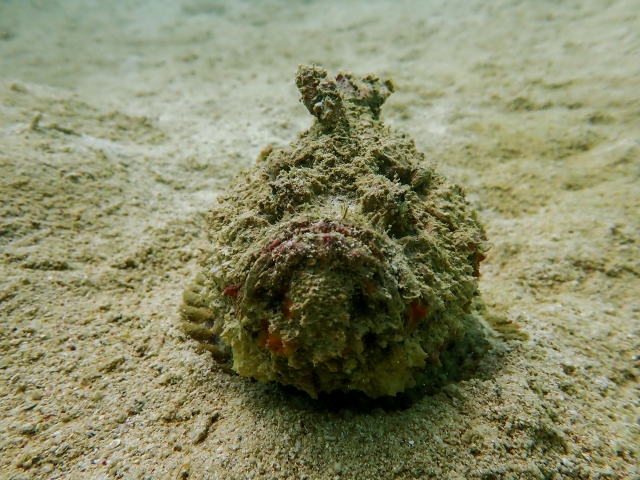
Because they resemble stones and rocks in color and shape, and are often hidden in the sand, they can unknowingly step on you and sting you. The bones of its dorsal fin are so hard that rubber-soled sandals can penetrate them.
What to do if stung
- Remove large visible spikes.
- Soak the affected area in 40-45°C hot water or put hot water in a plastic bag, etc. and apply it to the affected area.
Toxic Animals
crown-of-thorns starfish (Acanthaster planci)
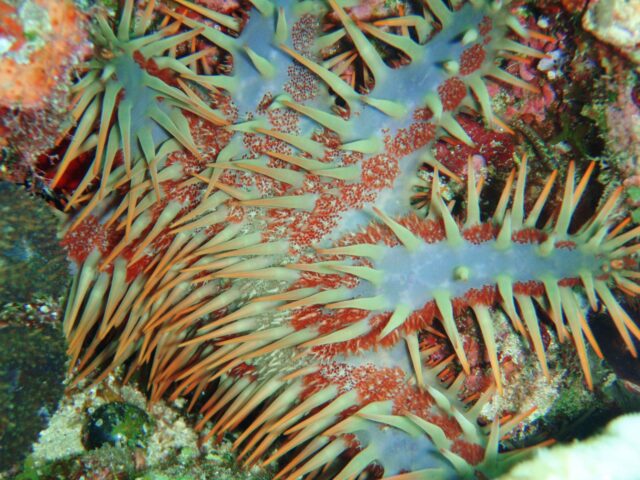
They are about 30 cm in diameter and have 10 to 17 arms with poisonous spines. During the daytime, they often hide under coral, so if you carelessly put your hand under coral, you may be stung.
What to do if stung
- Remove large visible spikes.
- Soak the affected area in 40-45°C hot water or put hot water in a plastic bag, etc. and apply it to the affected area.
Toxic Animals
6) Madaraumihebi
Sea snakes are members of the cobra family and have a strong neurotoxin that paralyzes the nerves and makes it impossible to move when bitten. Although sea snakes may approach you, do not touch them!
What to do if stung
- Squeeze the poison out of the affected area with your hand.
- Go to the hospital for treatment as soon as possible.
Toxic Animals
Amboyna gigantea (species of Venus clam)
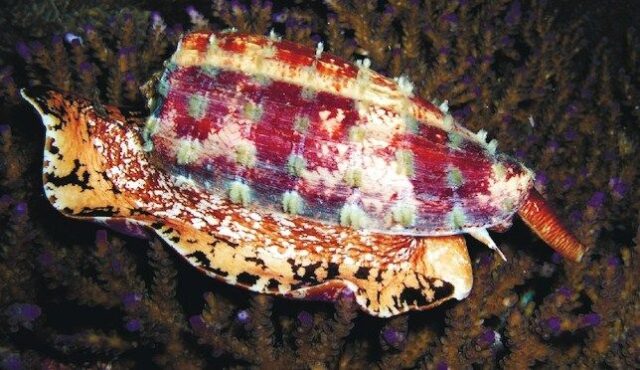
It is a large, curly shell, about 10 cm long, with a reddish-brown reticulate pattern. It is neurotoxic and its sting causes little or no pain, but the body quickly becomes numb and there is a danger of drowning.
What to do if stung
- Squeeze the poison out of the affected area with your hand.
- Go to the hospital for treatment as soon as possible.
Toxic Animals
(viii) Hypodytes rubripinnis (species of octopus)
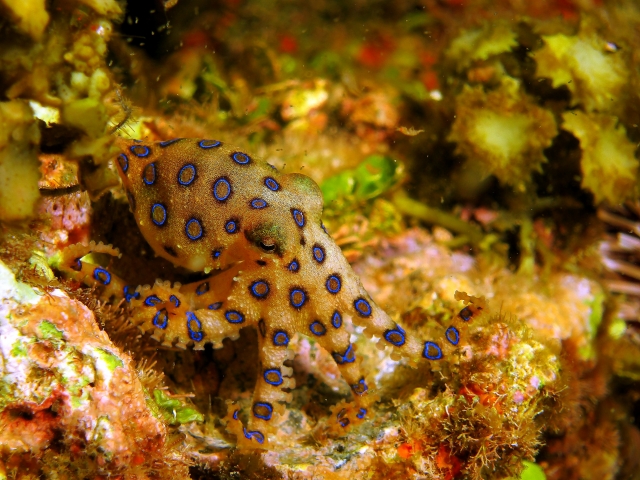
It is a small octopus about 12 cm long. When startled, its blue patterns become bright and beautiful, but it has a poison called tetrodotoxin, the same as pufferfish, which is known for its deadly poison. They live in rocky holes and under stones on coral reefs.
What to do if stung
- Squeeze the poison out of the affected area with your hand.
- Go to the hospital for treatment as soon as possible.
Toxic Animals
nine-spotted ladybug (Coccinella septempunctata)
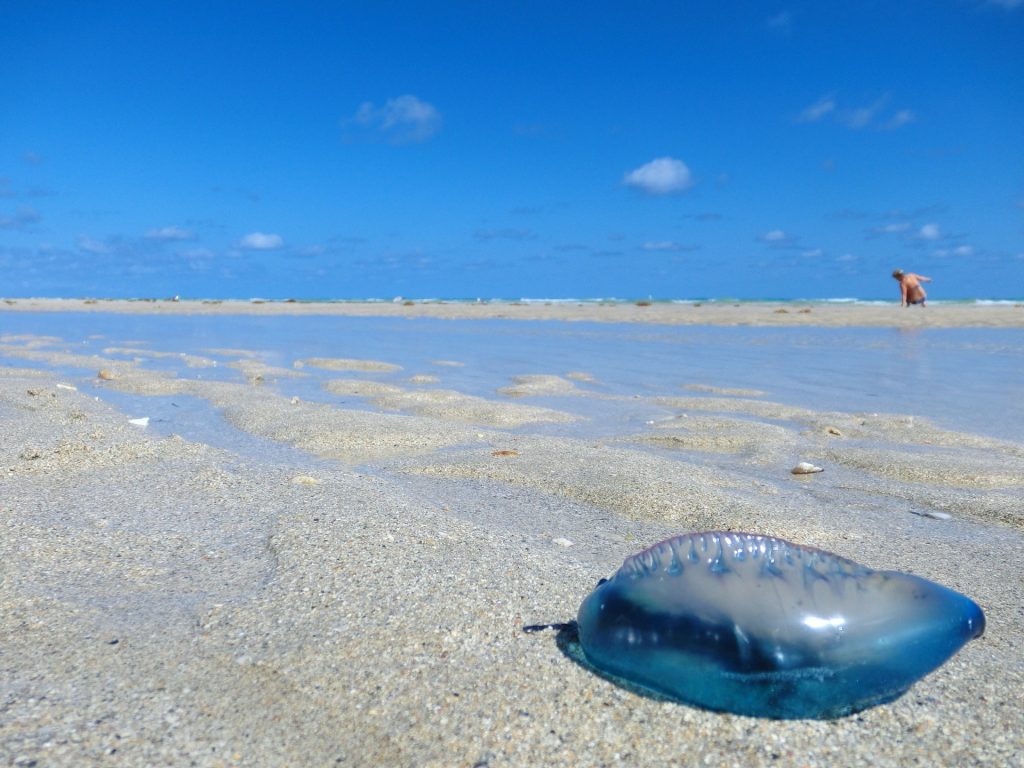
An open-ocean jellyfish, it is sometimes washed up on shore on windy days. It floats on the surface of the water in a blue floating bag with several long tentacles hanging from its underside.
What to do if stung
- Flush cnidocytes and tentacles with seawater.
- Cool with ice or cold water.
*Never use vinegar.
Toxic Animals
(10) Wunberg's anemone
These anemones, 10-20 cm in diameter, are highly poisonous and often sting unnoticed while ebbing and flowing. Symptoms may be prolonged and kidney and other organs may deteriorate, so please go to a hospital immediately after being stung.
What to do if stung
- Flush cnidocytes and tentacles with seawater.
- Cool with ice or cold water.
*Never use vinegar.
Unusual creatures found in the jungle of Iriomote Island
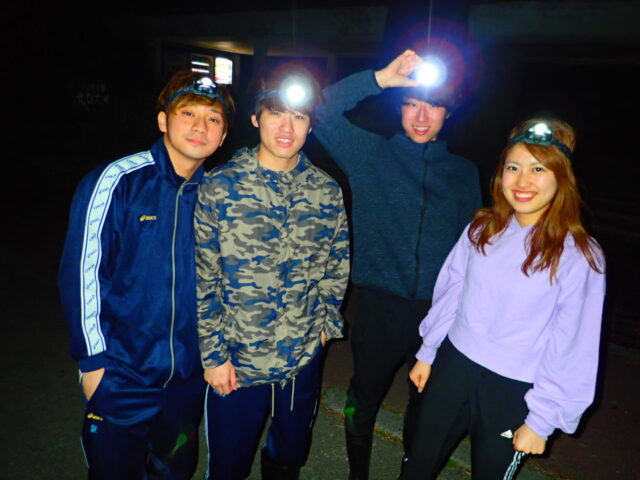
The jungles of Iriomote Island are home to many rare plants and animals.
Prep.Participate in jungle exploration tours andLet's find the creatures of Iriomote Island in real life! Especially, the jungle night tour isChildren who love living creatures are very excited! This is a tour of the
↓More about Iriomote Island Night Tour
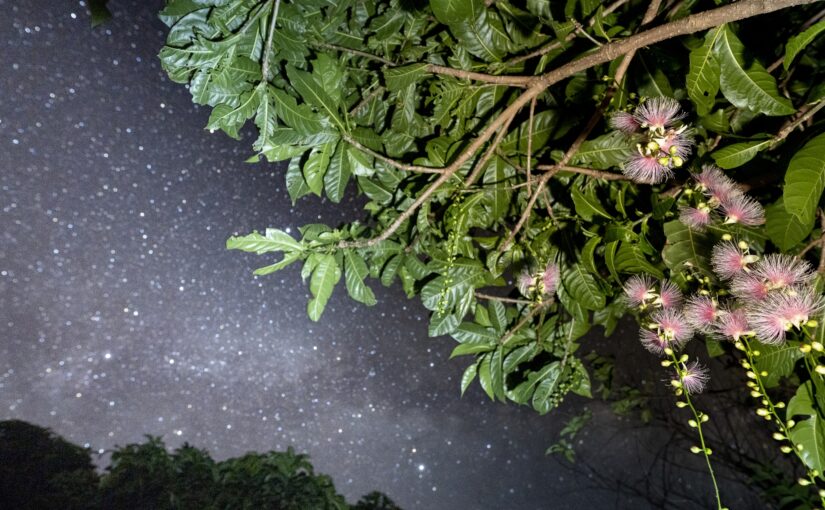 Iriomote Island Night Tour (star gazing) Night tour is recommended to see the deep nature of Iriomote Island! If you come all the way to Iriomote Island, it would be a waste if you don't enjoy the island until night! (14 in total) アクティビティの詳細を見る
Iriomote Island Night Tour (star gazing) Night tour is recommended to see the deep nature of Iriomote Island! If you come all the way to Iriomote Island, it would be a waste if you don't enjoy the island until night! (14 in total) アクティビティの詳細を見る ↓ Click here for the plan including Iriomotejima Jungle Night ↓ Click here for the plan including Iriomotejima Jungle Night
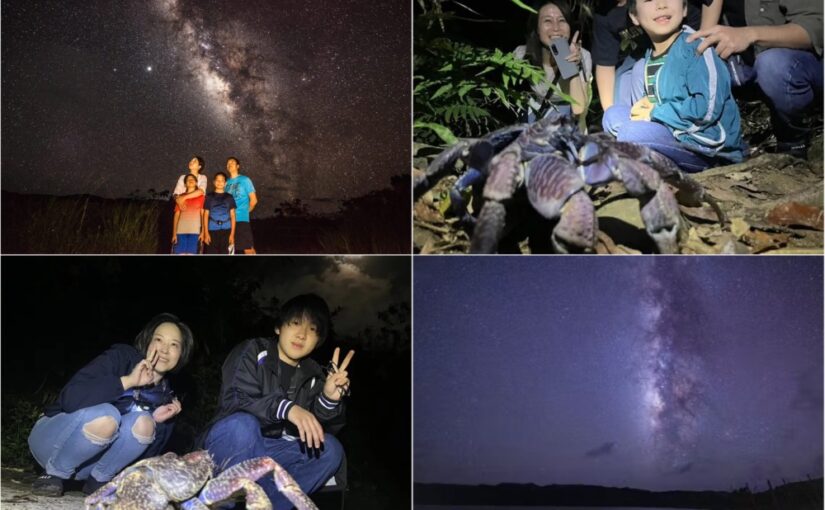 ★Special Winter SALE [Iriomotejima/Night] Starry Sky & Subtropical Jungle Night Tour♪Reservations OK on the day!開始時間20:00-22:00所要時間Approx. 2 hours5,900 yen →directional marker or indicator4,900suffix for names of swords, armour, musical instruments, etc.
★Special Winter SALE [Iriomotejima/Night] Starry Sky & Subtropical Jungle Night Tour♪Reservations OK on the day!開始時間20:00-22:00所要時間Approx. 2 hours5,900 yen →directional marker or indicator4,900suffix for names of swords, armour, musical instruments, etc.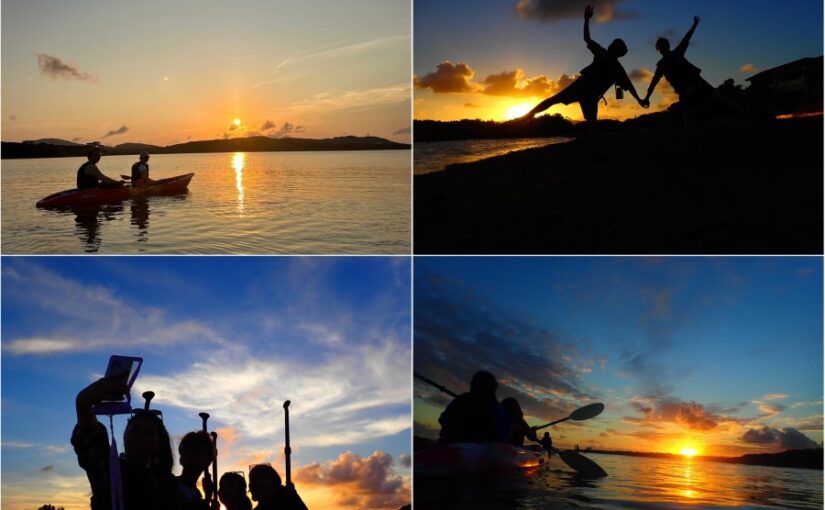 Sunset & Night Kayak Tour☆New experience in Iriomote Island, a World Natural Heritage site♪Free photo & pick-up (No.65)開始時間Summer: 18:00-19:30
Sunset & Night Kayak Tour☆New experience in Iriomote Island, a World Natural Heritage site♪Free photo & pick-up (No.65)開始時間Summer: 18:00-19:30(Winter) 16:45-18:15所要時間Approx. 2 hours8,900 yen →directional marker or indicator7,900suffix for names of swords, armour, musical instruments, etc.
↓ Click here to read the article in conjunction with ↓ ↓
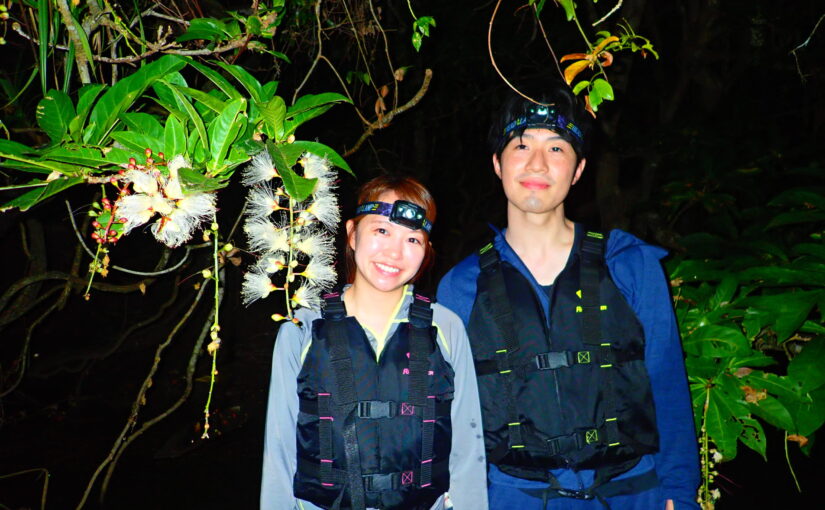 Introducing the charm of jungle night tours to enjoy the night of Iriomote Island!Jungle night tour to enjoy the night of Iriomote Island which is different from the daytime. Why don't you experience the unparalleled nature with precious creatures such as coconut crabs and the star-filled night sky?
Introducing the charm of jungle night tours to enjoy the night of Iriomote Island!Jungle night tour to enjoy the night of Iriomote Island which is different from the daytime. Why don't you experience the unparalleled nature with precious creatures such as coconut crabs and the star-filled night sky?
Iriomote Island Jungle Creatures
(1) coconut crab
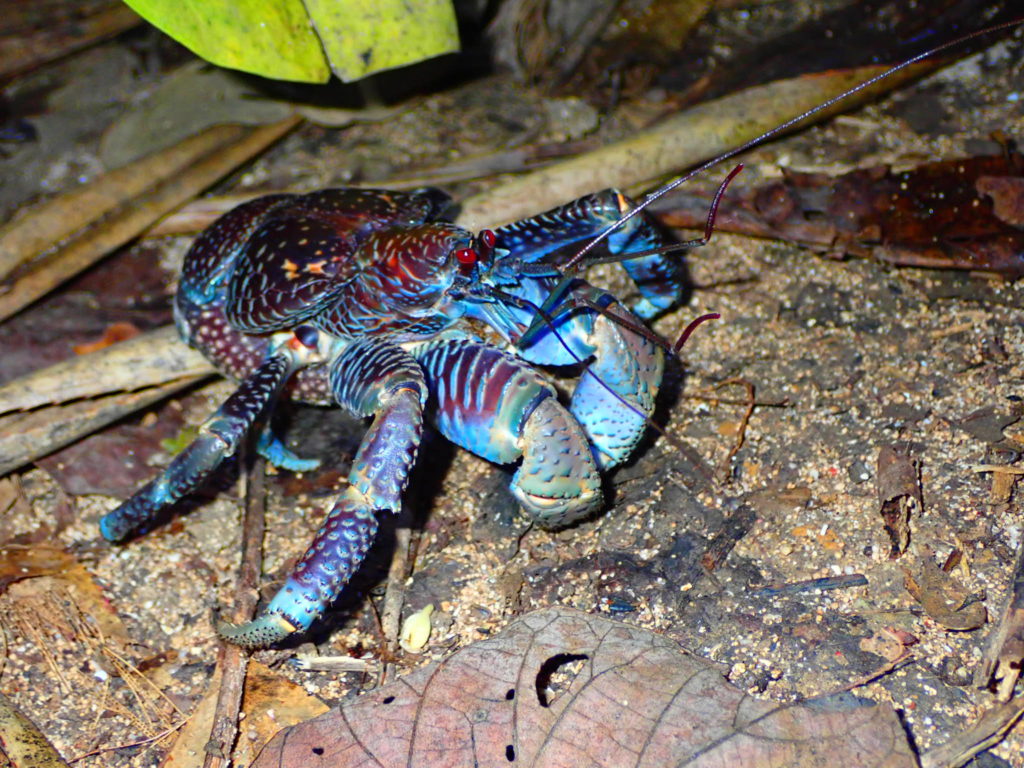
Possess strong scissors and live on landLargest species of crustaceanIt is.
In Iriomote Island, coconut crabs can be seen unexpectedly if you walk along the roads at night, but because of their delicacy, they continue to be overhunted and their population is drastically decreasing. Since it grows extremely slowly, overharvesting may lead to its extinction.
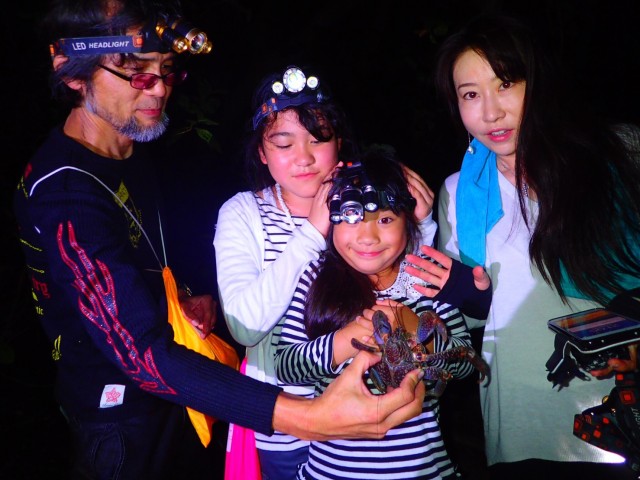
Currently.Designated as endangered speciesIt is prohibited to catch coconut crabs on Hatoma Island. Note that on Hatoma Island, in order to protect coconut crabs, there is a rule prohibiting the capture of crabs whose shells are smaller than an adult's fist.
↓Click here for a plan to see coconut crabs.
 ★Special Winter SALE [Iriomotejima/Night] Starry Sky & Subtropical Jungle Night Tour♪Reservations OK on the day!開始時間20:00-22:00所要時間Approx. 2 hours5,900 yen →directional marker or indicator4,900suffix for names of swords, armour, musical instruments, etc.
★Special Winter SALE [Iriomotejima/Night] Starry Sky & Subtropical Jungle Night Tour♪Reservations OK on the day!開始時間20:00-22:00所要時間Approx. 2 hours5,900 yen →directional marker or indicator4,900suffix for names of swords, armour, musical instruments, etc.
Iriomote Island Jungle Creatures
(2) Iriomote wildcat
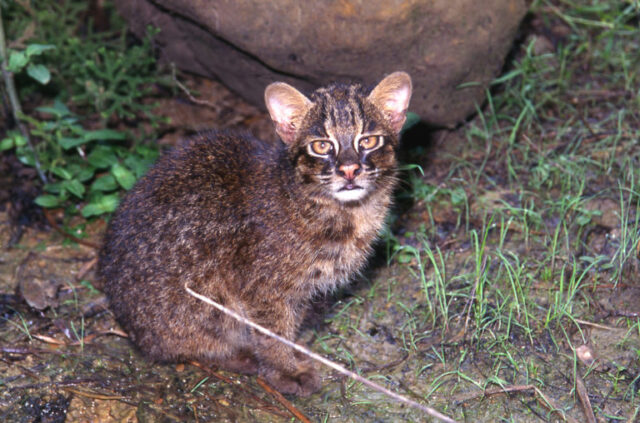
It stands at the top of the terrestrial ecosystem of Iriomote Island and is a rare cat with a current population of about 100 animals.Designated as a special natural monumentEven if you live in Iriomote Island, you are lucky if you can see them once or twice a year.
It is difficult to see them during a few days stay in Iriomote Island, so if you want to see them, it is recommended to go to "Iriomote Wildlife Conservation Center".
↓Learn more about the Iriomote Wildlife Conservation Center
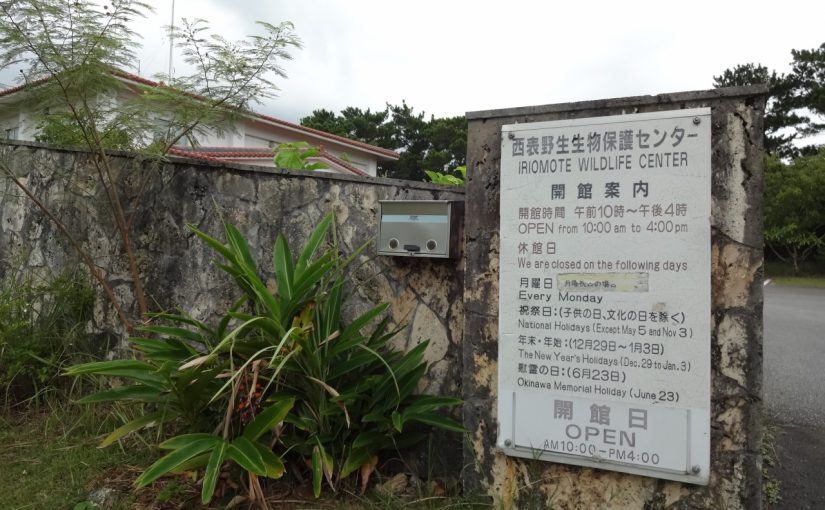 Iriomote Island-Iriomote Wildlife Conservation Center Iriomote Wildlife Conservation Center is a facility built as a base for Iriomote wild cat conservation activities. Not only Iriomote wild cat, but also many other birds, migratory birds and animals living in Iriomote Island are exhibited. In addition, the facility will open in 2022, 7 [...].
Iriomote Island-Iriomote Wildlife Conservation Center Iriomote Wildlife Conservation Center is a facility built as a base for Iriomote wild cat conservation activities. Not only Iriomote wild cat, but also many other birds, migratory birds and animals living in Iriomote Island are exhibited. In addition, the facility will open in 2022, 7 [...].
Iriomote Island Jungle Creatures
crested serpent eagle (Spilornis cheela)
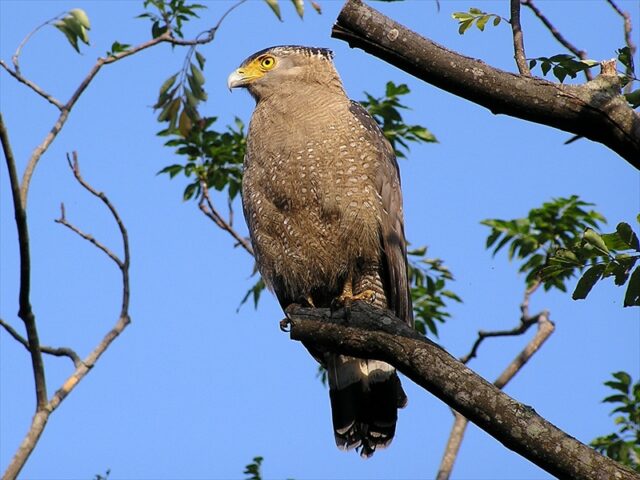
They perch on telephone poles and trees and target small animals such as lizards and frogs.Designated as a special natural monumentThe bird is a wild bird that has been
Iriomote Island Jungle Creatures
(4) Yaeyama flying fox (Pteropus volitans)
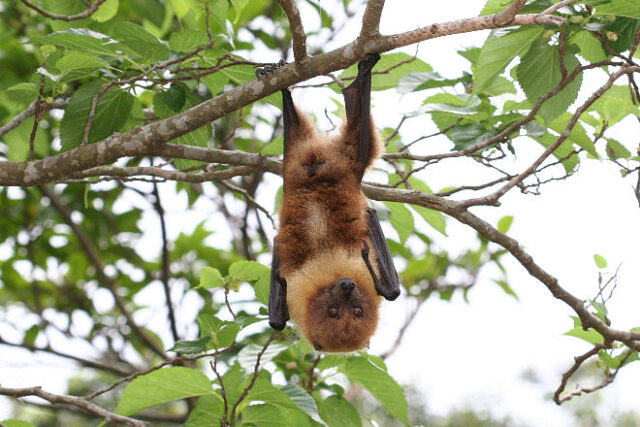
After sunset, they fly around to feed on flowers and tree fruits, and can be seen around people's houses. Iriomote Island and Ishigaki IslandCan be seen on night tours, etc.It is.
↓Learn more about ↓Night Tours
 Iriomote Island Night Tour (star gazing) Night tour is recommended to see the deep nature of Iriomote Island! If you come all the way to Iriomote Island, it would be a waste if you don't enjoy the island until night! (14 in total) アクティビティの詳細を見る
Iriomote Island Night Tour (star gazing) Night tour is recommended to see the deep nature of Iriomote Island! If you come all the way to Iriomote Island, it would be a waste if you don't enjoy the island until night! (14 in total) アクティビティの詳細を見る Iriomotejima Jungle Night Tour is here↓↓.
 ★Special Winter SALE [Iriomotejima/Night] Starry Sky & Subtropical Jungle Night Tour♪Reservations OK on the day!開始時間20:00-22:00所要時間Approx. 2 hours5,900 yen →directional marker or indicator4,900suffix for names of swords, armour, musical instruments, etc.
★Special Winter SALE [Iriomotejima/Night] Starry Sky & Subtropical Jungle Night Tour♪Reservations OK on the day!開始時間20:00-22:00所要時間Approx. 2 hours5,900 yen →directional marker or indicator4,900suffix for names of swords, armour, musical instruments, etc.
Iriomote Island Jungle Creatures
(5) Saxima Hub
The saxima habu is a small venomous snake of 60-120 cm in length and 50-100 cm in head and body length that is widely found in fields, forests, and villages in the Yaeyama Islands. It is a nocturnal creature that preys on frogs and rats. It is highly venomous, but serum is rarely used because it is not lethal. Most individuals are brown-based in body color, but some are orange.
Breeding season occurs from June to July, and activity increases from March to August. Their movements are slow, so if you spot them, remain calm and do not approach them.
Iriomote Island Jungle Creatures
(6) Yaeyama Hibaa
The Yaeyama hibaa is a slender, venomous snake of the hibakari genus of the family Namihebiidae found only on Ishigaki and Iriomote Islands. It is a relatively small species with a total length of 70-100 cm. There is a similar species, the glass hibaa, but while the glass hibaa is oviparous, the Yaeyama hibaa is viviparous. It lives in wetlands such as rivers and rice paddies, and preys on frogs and other amphibians.
Although they are venomous snakes, they are less poisonous than other species. In addition, they have fangs in the back of their mouths and a docile disposition, so they rarely cause human harm.
Iriomote Island Jungle Creatures
seven-spotted tree frog (Xenopus laevis)
The saxima tree frog is a frog endemic to Japan that can be found in rice paddies, ponds, and forests in the Sakishima Islands. They chirp in groups at night when the humidity is high, so you can tell the presence of the Saximan's frogs by their calls.
However, it is now considered a separate species because it is larger than the toad, has a dorsal line, makes a different call, and has a white ventral surface and no dorsal line.
Iriomote Island Jungle Creatures
(viii) Yaeyama green tree frog (Rhacophorus arboreus)
The Yaeyama green frog is a green frog that lives in the forests around rice paddies and wetlands on Ishigaki and Iriomote Islands, with a breeding season from December to March. They usually live in the forest trees.
Adult males average 45 mm in length and females average 56 mm in length, with males being slightly smaller and making a unique filili-lili sound.
Iriomote Island Jungle Creatures
(ix) giant tiger butterfly (Pseudotriakis giganteus)
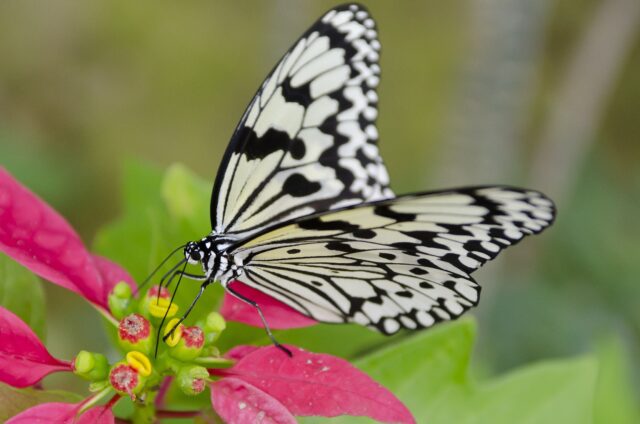
It is the city butterfly of Ishigaki City with wings that are 15 cm long when spread. The pupa is golden in color, and as an adult it looks like a tropical lady as it flutters about.Yubu Island Botanical Gardenindicates certainty, emphasis, etc.It can be seen.
↓Learn more about Yubu Island Sightseeing
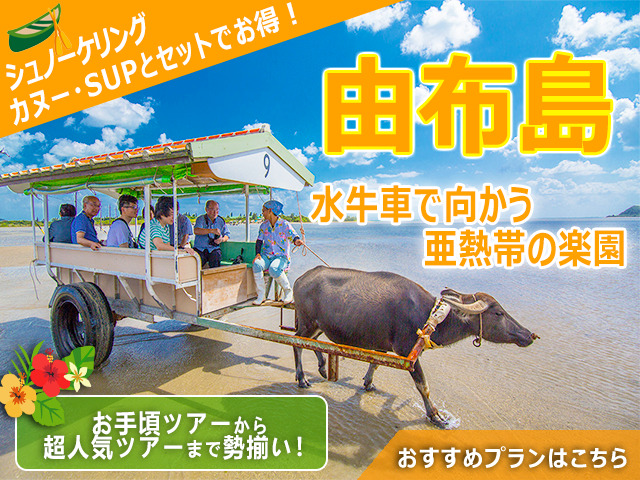 Yubu Island (buffalo cart) Sightseeing Tour Yubu Island is the most popular sightseeing spot in the island, which can be reached from Iriomote Island. You can enjoy sightseeing in Yubu Island by a slow-moving buffalo cart! (28 total) アクティビティの詳細を見る
Yubu Island (buffalo cart) Sightseeing Tour Yubu Island is the most popular sightseeing spot in the island, which can be reached from Iriomote Island. You can enjoy sightseeing in Yubu Island by a slow-moving buffalo cart! (28 total) アクティビティの詳細を見る ↓Click here for a plan that includes sightseeing on Yubu Island.
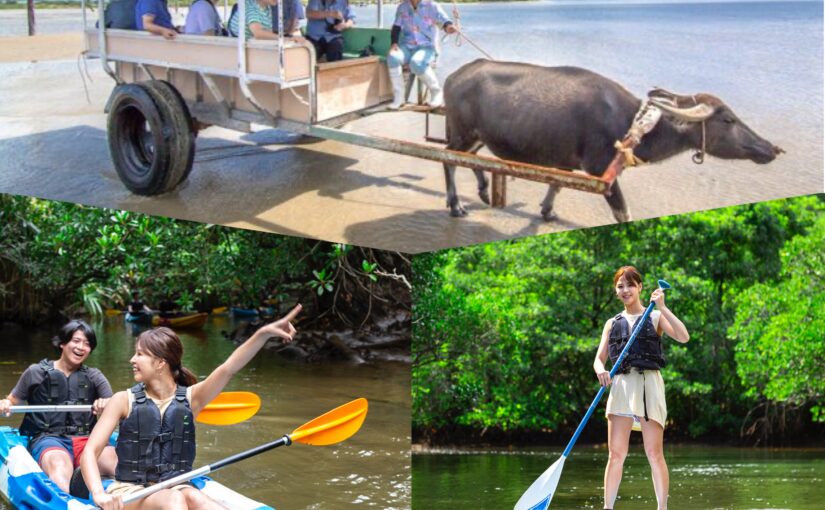 Special Winter SALE 【Iriomotejima / 1 Day】Sightseeing and activity as a set! Yubu Island" Sightseeing & Mangrove SUP or Canoeing (No.124)開始時間9:00-15:30所要時間Approx. 6 hours14,000 yen →directional marker or indicator12,500suffix for names of swords, armour, musical instruments, etc.
Special Winter SALE 【Iriomotejima / 1 Day】Sightseeing and activity as a set! Yubu Island" Sightseeing & Mangrove SUP or Canoeing (No.124)開始時間9:00-15:30所要時間Approx. 6 hours14,000 yen →directional marker or indicator12,500suffix for names of swords, armour, musical instruments, etc.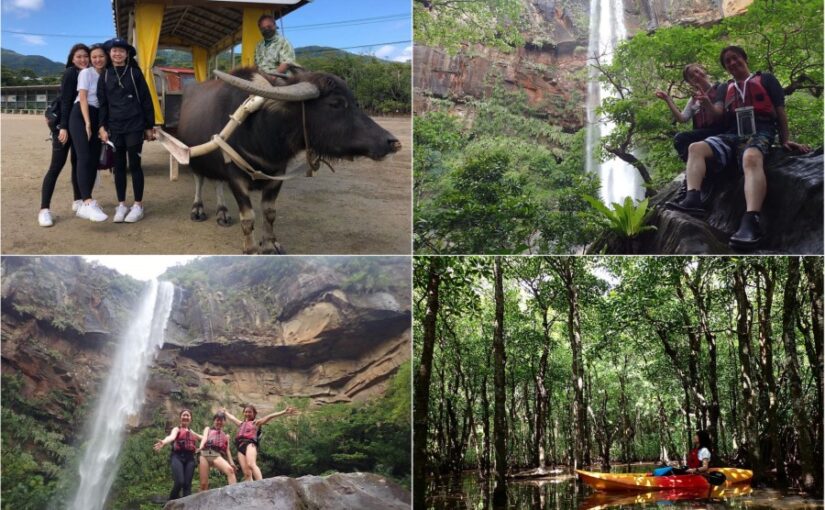 Iriomotejima Island/1 day] The early bird gets the worm on this very popular set☆Mangrove Canoeing to Pinaisara Falls & Yubu Island (buffalo cart) Sightseeing Tour《3-year-old participants OK!開始時間9:00-16:30所要時間Approx. 7.5 hours18,000 yen →directional marker or indicator15,000suffix for names of swords, armour, musical instruments, etc.
Iriomotejima Island/1 day] The early bird gets the worm on this very popular set☆Mangrove Canoeing to Pinaisara Falls & Yubu Island (buffalo cart) Sightseeing Tour《3-year-old participants OK!開始時間9:00-16:30所要時間Approx. 7.5 hours18,000 yen →directional marker or indicator15,000suffix for names of swords, armour, musical instruments, etc.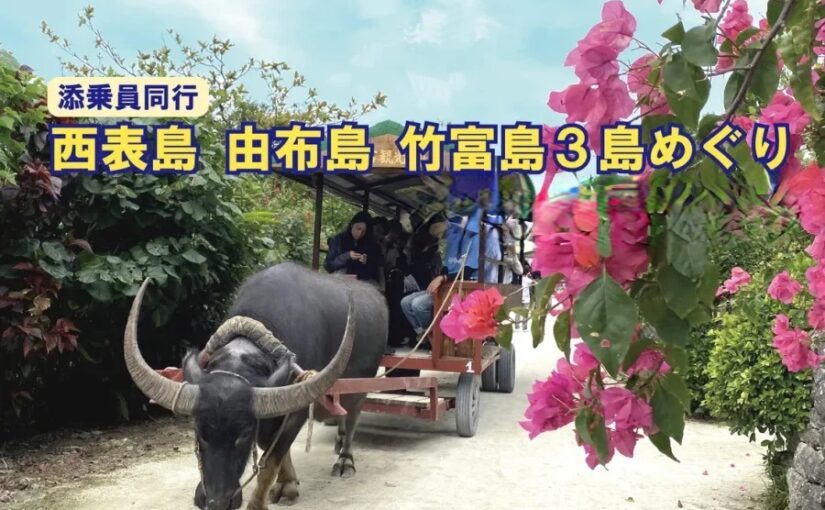 No longer being accepted] [Ishigaki departure/accompanied by tour guide] Very popular round-trip plan! Iriomote Island, Yubu Island, Taketomi Island 3-island Tour《With Happy Lunch》(No.507)開始時間8:30-16:30所要時間Approx. 9 hours14,900 yen
No longer being accepted] [Ishigaki departure/accompanied by tour guide] Very popular round-trip plan! Iriomote Island, Yubu Island, Taketomi Island 3-island Tour《With Happy Lunch》(No.507)開始時間8:30-16:30所要時間Approx. 9 hours14,900 yen
Rare plants found on Iriomote Island
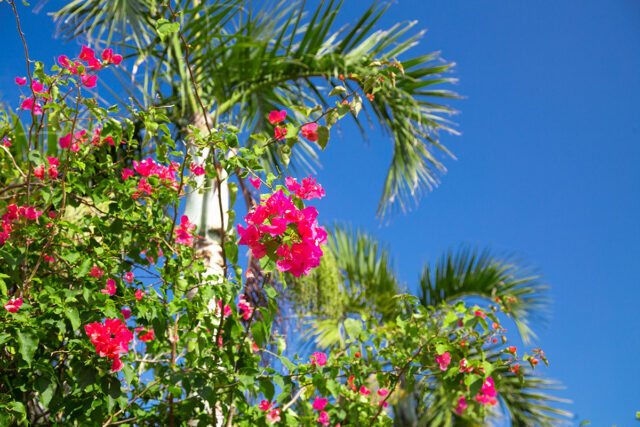
Next, I will introduce plants that grow in clusters on Iriomote Island.
If you are interested in plants, a visit to Yubu Island is recommended!Plants and flowers peculiar to the subtropical zoneSurrounded by the tropical atmosphere, you can fully enjoy the tropical atmosphere.
Plants of Iriomote Island
(1) saxifrage (Acer saccharum)
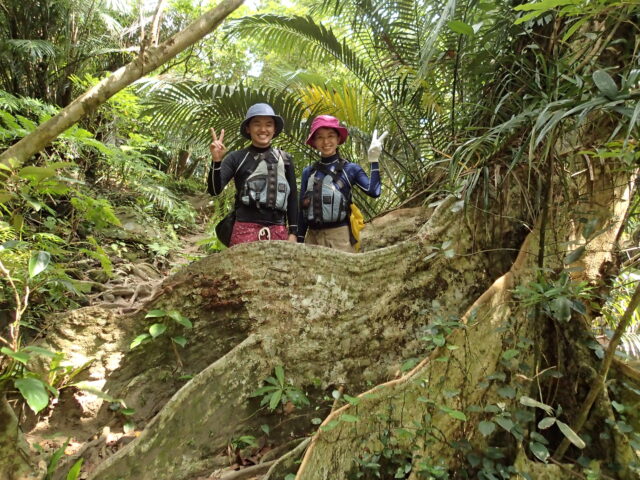
It has a unique root that looks like a number of planks standing on top of each other, and the plank root was used as a rudder for ships in ancient times.A must see because of its very interesting shape.It is! Your guide will introduce you during your jungle trek.
↓Learn more about jungle trekking
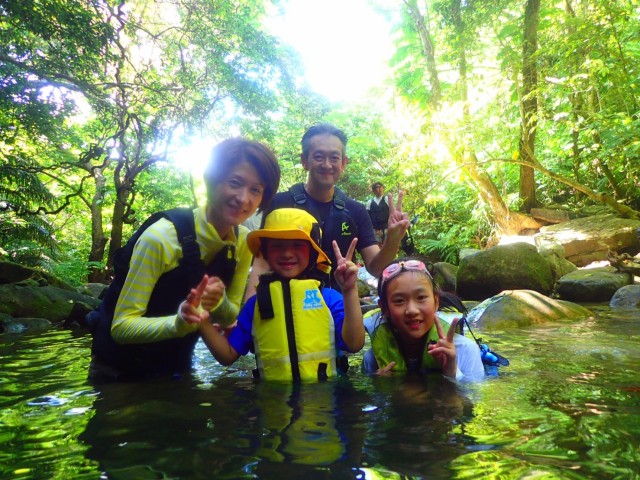 Iriomotejima Jungle Trekking Tour Jungle trekking tour to enjoy with your eyes while walking through the virgin forests of Iriomote Island, and enjoy the chirping of animals with your ears! (42 total) アクティビティの詳細を見る
Iriomotejima Jungle Trekking Tour Jungle trekking tour to enjoy with your eyes while walking through the virgin forests of Iriomote Island, and enjoy the chirping of animals with your ears! (42 total) アクティビティの詳細を見る
Plants of Iriomote Island
(2) Modama
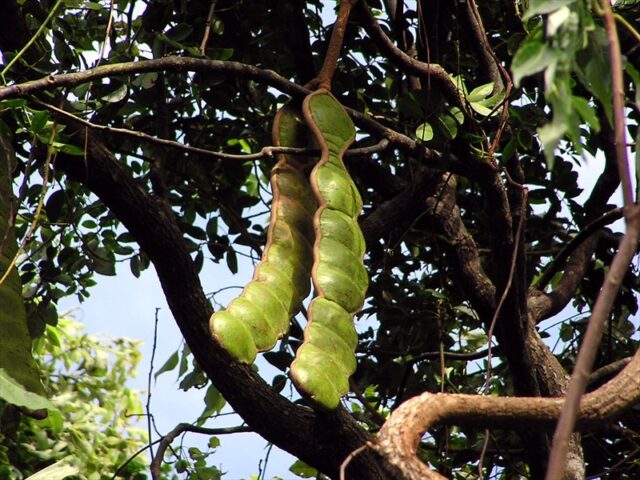
The pods are over 1 meter in size, and the beans inside can be as large as 5 cm in diameter,Japan's largest beanIt is said.
It grows wild along streams in forested areas, and beans that fall into rivers are sometimes found on beaches as they drift through the ocean and spread their distribution,As a souvenirIt is often sold.
↓Click here for plans including hiking at Modama Pond.
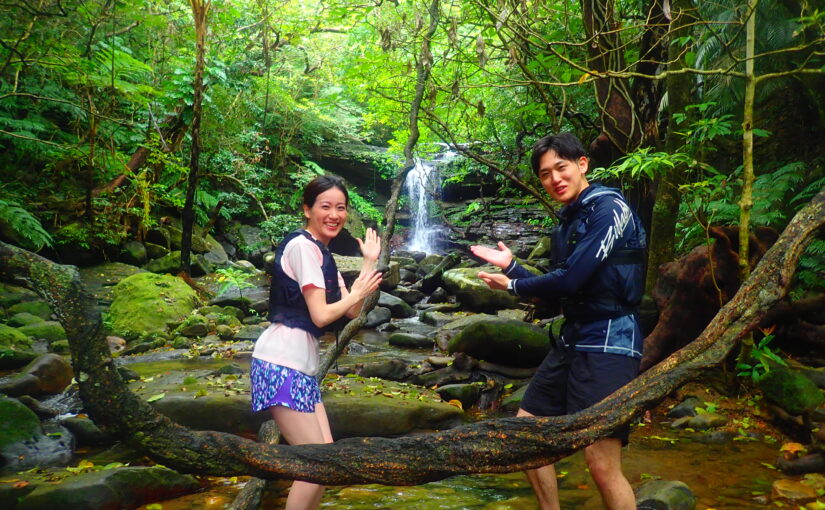 You can play and swim easily in the World Heritage Iriomote Island! Modama Pond Hiking Tour (No.43)開始時間9:30-12:00 / 13:30-16:00所要時間Approx. 2.5 hours5,900 yen
You can play and swim easily in the World Heritage Iriomote Island! Modama Pond Hiking Tour (No.43)開始時間9:30-12:00 / 13:30-16:00所要時間Approx. 2.5 hours5,900 yen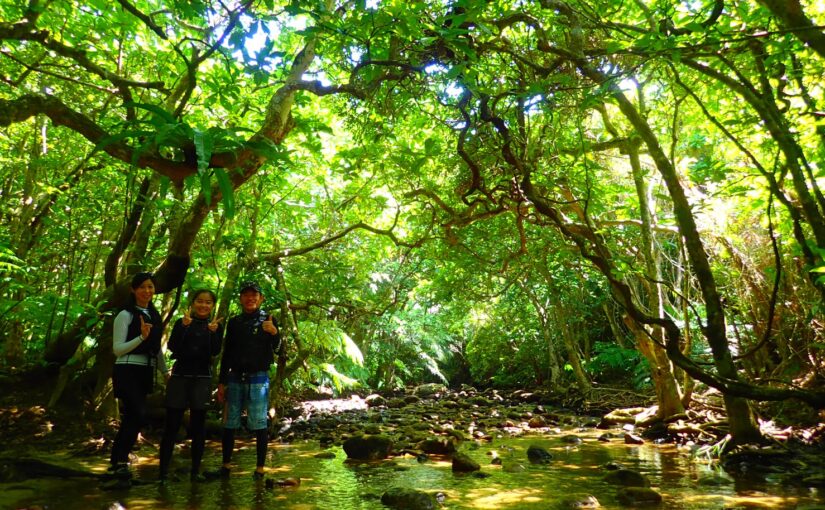 World Heritage Iriomote Island] Modama Pond Hiking & Star Sand Snorkeling (No.59)開始時間9:30-16:00所要時間Approx. 6.5 hours12,000 yen
World Heritage Iriomote Island] Modama Pond Hiking & Star Sand Snorkeling (No.59)開始時間9:30-16:00所要時間Approx. 6.5 hours12,000 yen
Plants of Iriomote Island
(iii) Sagaribana
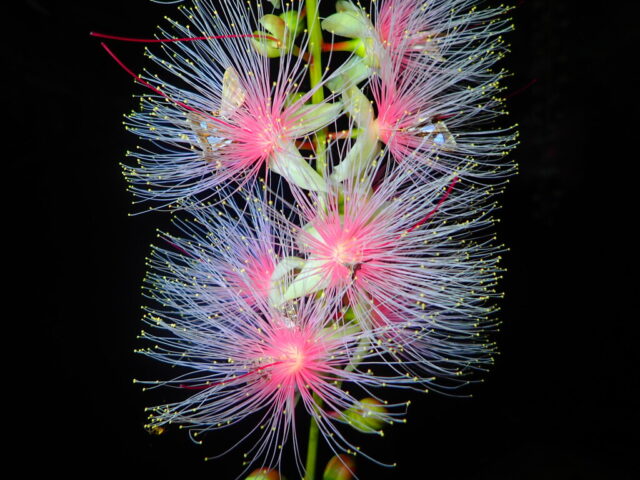
From early June to early AugustThe flowers are shaped like fireworks and appear during the period from April to September.Blooms only for one nightIn the morning, they are ephemeral flowers that are pottage on the surface of the water.
To see the sagaribana, which is said to bring happiness,Limited Time TourPlease check it out!
↓ Learn more about sagaribana viewing ↓
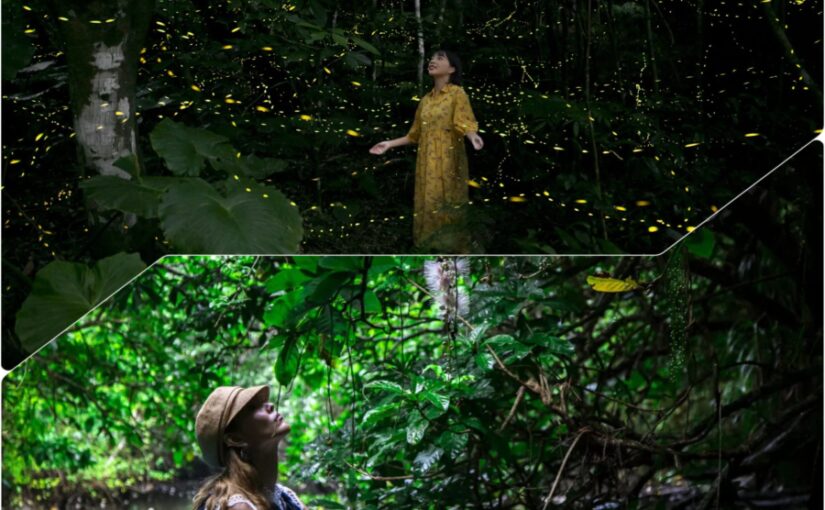 Seasonal Tour】Iriomotejima Sagaribana & Firefly Appreciation Tour There are many tours where you can see the "phantom flower" sagaribana, which blooms only one night, and Yaeyama fireflies, which spread all over the area like a carpet of light! (11 in total) アクティビティの詳細を見る
Seasonal Tour】Iriomotejima Sagaribana & Firefly Appreciation Tour There are many tours where you can see the "phantom flower" sagaribana, which blooms only one night, and Yaeyama fireflies, which spread all over the area like a carpet of light! (11 in total) アクティビティの詳細を見る ↓ Click here for the plan including viewing of Sagaribana ↓ Click here for the plan including viewing of Sagaribana
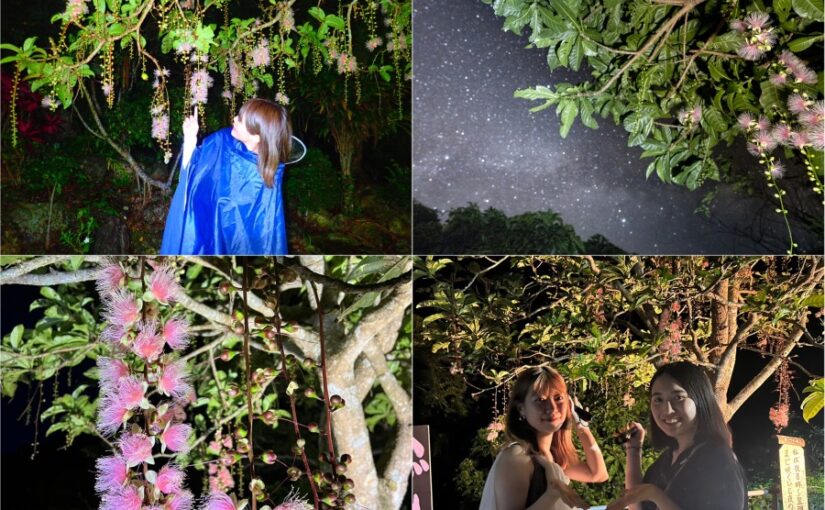 Jungle night tour to see "Sagaribana", a fantastic flower that falls in one night (No.13)開始時間20:00-22:00所要時間Approx. 2 hours5,900 yen →directional marker or indicator4,900suffix for names of swords, armour, musical instruments, etc.
Jungle night tour to see "Sagaribana", a fantastic flower that falls in one night (No.13)開始時間20:00-22:00所要時間Approx. 2 hours5,900 yen →directional marker or indicator4,900suffix for names of swords, armour, musical instruments, etc.↓ Click here to read the article in conjunction with ↓ ↓
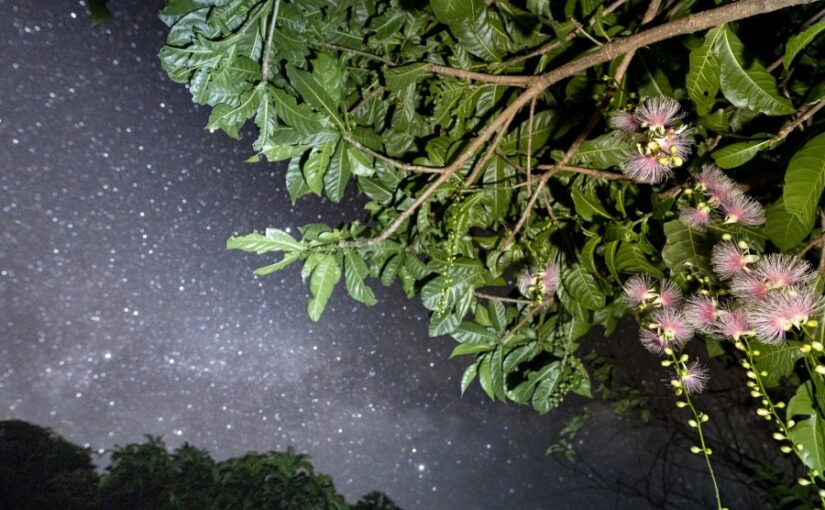 When is the best time to see and bloom Sagaribana in Iriomote Island? Recommended sagaribana viewing tours are also introduced!There is a flower you must see in Iriomote Island. It is a fantastic flower, sagaribana, which blooms only one night, and can be seen only from the latter half of June to the middle of August!
When is the best time to see and bloom Sagaribana in Iriomote Island? Recommended sagaribana viewing tours are also introduced!There is a flower you must see in Iriomote Island. It is a fantastic flower, sagaribana, which blooms only one night, and can be seen only from the latter half of June to the middle of August!
Iriomote Island Other Creatures
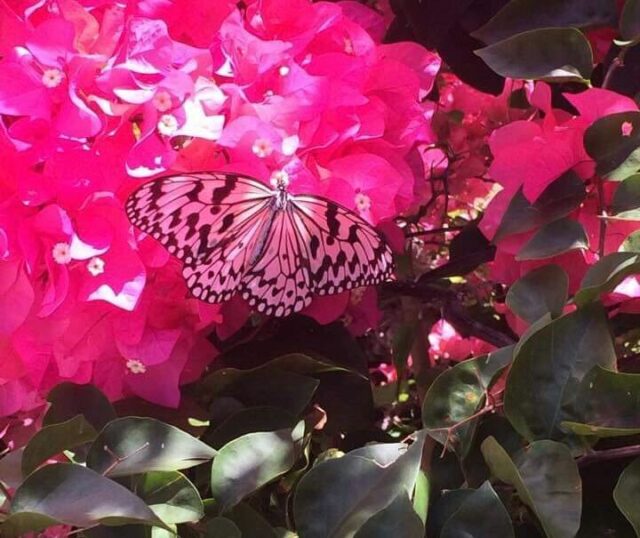
Even if you do not join a tour, you can see some creatures during transportation or when you visit the island.
Birds (1) Ryukyu Red-crowned Night-heron
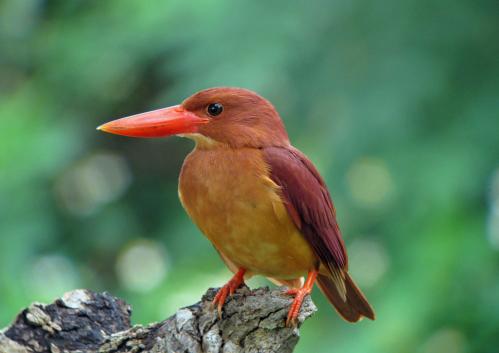
A member of the kingfisher family, this migratory bird has a large beak and reddish-brown feathers.
Birds (2) White-bellied Warbler
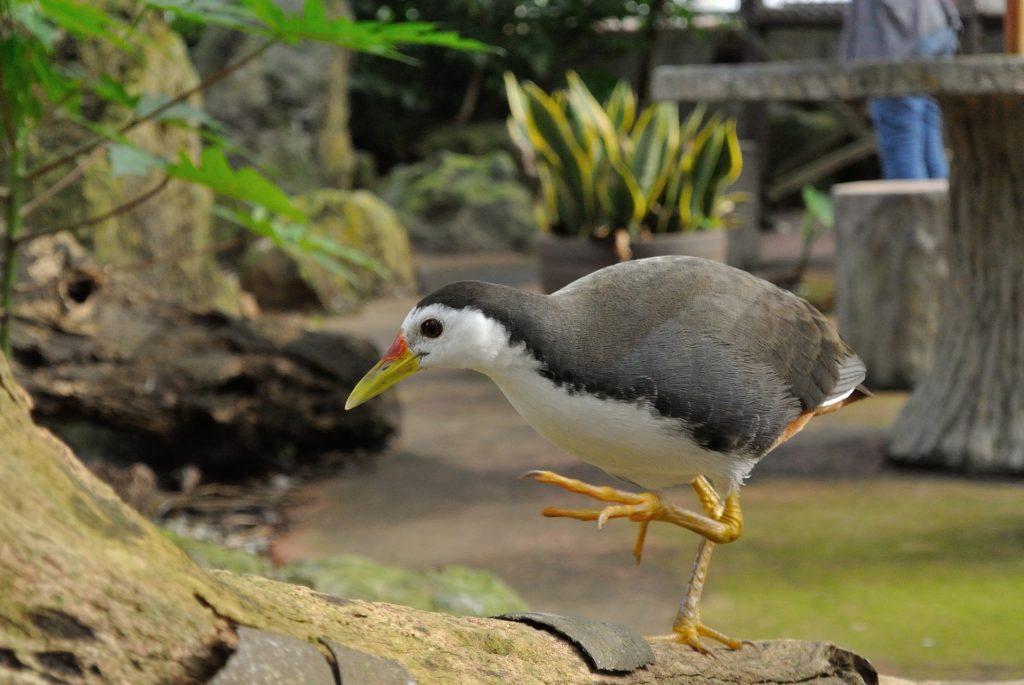
When you drive a rental car in Iriomote Island, you are sure to encounter them. They are flightless birds, so they are often run over by cars....
They are the same species as the Okinawa's famous Okinawa rail, Yanbaru-kuina. Their cute behavior makes you want to take pictures of them, but it is quite difficult because they run away as soon as you encounter them. They are sometimes accompanied by their offspring, which are black and fluffy and even cuter.
Birds ③Doves
The Ryukyu pigeon is a small pigeon, about 25 cm long, widely distributed in remote islands of Okinawa including Iriomote Island, Miyako Island, Ishigaki Island, Hatoma Island, and Yonaguni Island, and is designated as a national natural treasure.
As its name implies, the Ryukyu pigeon is a beautiful pigeon with golden-green wings that have a metallic sheen. It has a blue-gray head, red beak and legs, white forehead to brow patch, purplish-gray chest to abdomen, and two gray lines near the rump. The overall coloration is enchanting to behold.
They live in dense forests and fly after sunset to forage on forest roads and farm fields. They can frequently be seen as they nest in the tops of trees that are not so tall.
Mammals (1) Yonaguni horse
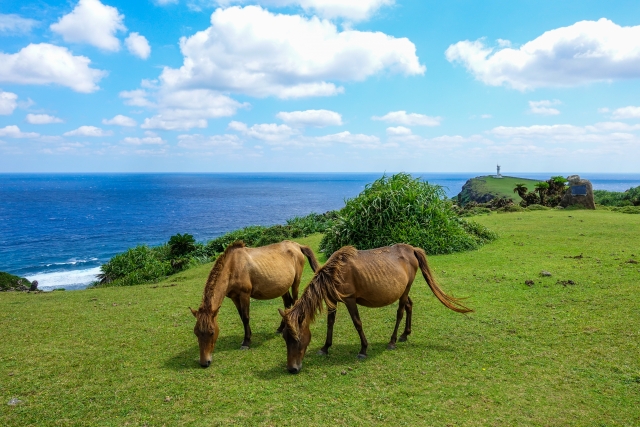
A native horse of Yonaguni Island. It is a gentle horse with a height of about 120 cm, but has strength and endurance for its size.
Click here for Yonaguni Island Horseback Riding Experience Tour
Mammals (2) Ryukyu wild boar
Ryukyu wild boar, also called kamai, is a small wild boar and a specialty of Iriomote Island. The hunting season is lifted in winter, and fresh wild boar can be eaten as sashimi. It is widely distributed not only in Iriomote Island but also in Amami Islands such as Amami Oshima, Kageroma Island, Tokunoshima, Okinawa Island, and Ishigaki Island.
The Ryukyu wild boar has a species similar to the Japanese wild boar, and its habits and diet are almost identical. They eat not only plants such as underground stems, bamboo shoots and shii nuts, but also animals such as earthworms, lizards, snakes, insects, and rodents. They are slightly smaller than the Japanese wild boar.
Amphibians (1) Semaru box turtle
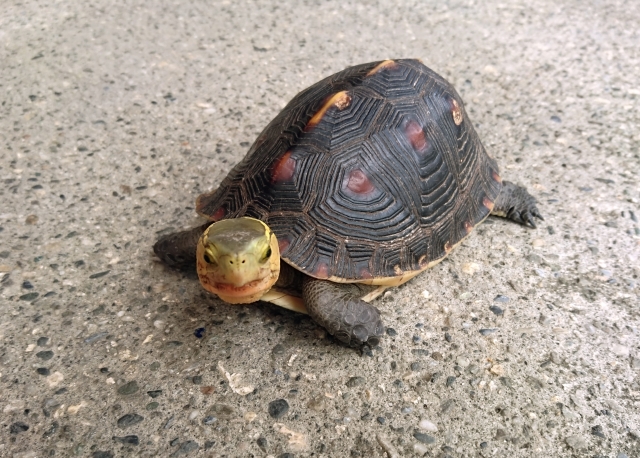
When startled, it retracts its head, tail, and limbs and covers them with its ventral shell. In recent years, there have been many accidents in which semarukins have been run over by cars.
In China, the semaruga turtle is popular for its ability to save money.
Amphibians (2) Yaeyama tortoise
The Yaeyama tortoise is a subspecies of the southern pond turtle, distributed in southern China and Taiwan, and is endemic to Yaeyama. As an invasive species from Yaeyama, there are concerns about predation and hybridization of native species on the main island and Miyakojima.
They live in lakes, fields, rice paddies, and other low-lying wetlands and are carnivores that feed mainly on fish, tadpoles, worms, and insects. They are nocturnal and are rarely seen during the day. It is a medium-sized species with a slightly flattened or gently domed dorsal carapace length of less than 20 cm, and can be distinguished from the southern pond turtle by the inconspicuous yellow stripe pattern behind the eye. The breeding season runs from early spring to summer.
Reptiles: (1) Rock lizard
The ishigaki lizard is a brownish-brown lizard that inhabits the Yaeyama Islands to which Iriomote and Ishigaki Islands belong and the Miyako Archipelago including Shimoji Island. It is very similar to the Noue's lizard, but the difference is easy to recognize because the Ishigaki lizard has a distinctive blue tail and vertical stripes on its body in its juvenile period. The adult also has a brown base with golden longitudinal stripes running from head to waist, and the tail is blue with a metallic sheen.
It is also about 15 cm long, which is the longest in the lizard genusJapan's smallest individualIt is. They prey on insects and spiders and are often found on stones to sunbathe in the morning. When they sense danger, they cut themselves off at the tail and run away. When filled with nourishment, they regenerate, but touching them unnecessarily weakens them, so if you find them, just observe them.
Reptiles 2) Iliomote mori grasshopper
As its name suggests, the Iriomote mori grasshopper is an endemic grasshopper species of Iriomote Island. Iriomote mori grasshopper inhabits a wide range of fields such as forests, mountains, and grasslands.
Compared to the common grasshopper, the Iriomote mori grasshopper is characterized by the length of its antennae and the development of its hind legs. Its body color is black and yellow, and the tips of its hind legs are vivid red. This species prefers light forests and feeds mainly on gotu, kumatake orchids, and mulberry.
Endemic only to Iriomote IslandSo, please look for it when you visit Iriomote Island♪
Reptiles ③ Yaeyama honeydew dragonfly
The Yaeyama damselfly is a small dragonfly that inhabits mountain streams and belongs to the family of the damselflies of the genus Yaeyama (Lepidoptera) in the suborder Homoptera. This species is so named because it has a small nose-shaped projection on its head.
While most river dragonflies have long body parts in relation to their wings, this species is unique in that its wings are long while its hall is short, and its hind wings are longer than its forewings. The larva, the yago, also has a short body, and is found in mountain streams flowing through forests.
Look for them on your trekking and canyoning adventures in the canyon.
↓ Learn more about canyoning ↓
 Iriomotejima Canyoning Tour Canyoning and shower climbing in the rich nature of Iriomote Island! Enjoy natural water slides and diving points. (22 in total) アクティビティの詳細を見る
Iriomotejima Canyoning Tour Canyoning and shower climbing in the rich nature of Iriomote Island! Enjoy natural water slides and diving points. (22 in total) アクティビティの詳細を見る ↓ Canyoning is included in the package.
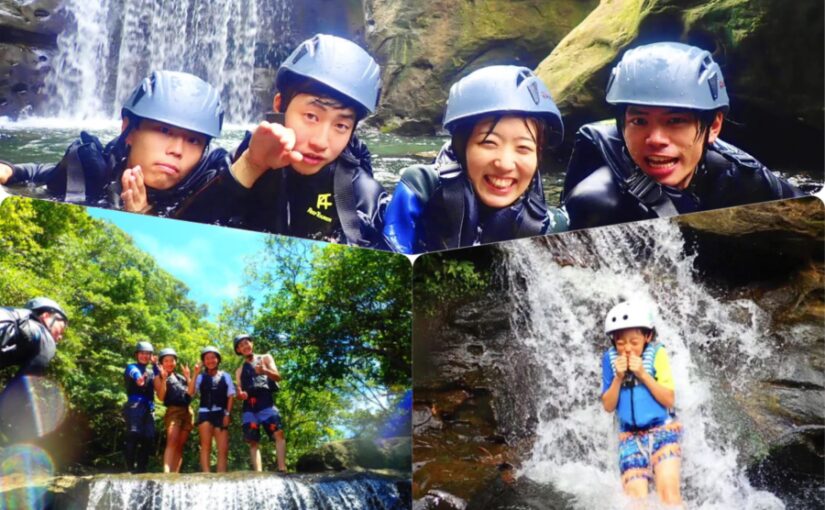 Special Winter SALE 【Iriomotejima / Half Day】Omija Waterfall Canyoning! Natural athletic experience with natural slide & waterfall play & spectacular view from the observatory! Free Photo & Day Trip OK] Both adults and children are excited to the max (No.91)開始時間9:00-11:30 / 13:00-15:30所要時間Approx. 2.5 hours8,900 yen →directional marker or indicator7,900suffix for names of swords, armour, musical instruments, etc.
Special Winter SALE 【Iriomotejima / Half Day】Omija Waterfall Canyoning! Natural athletic experience with natural slide & waterfall play & spectacular view from the observatory! Free Photo & Day Trip OK] Both adults and children are excited to the max (No.91)開始時間9:00-11:30 / 13:00-15:30所要時間Approx. 2.5 hours8,900 yen →directional marker or indicator7,900suffix for names of swords, armour, musical instruments, etc.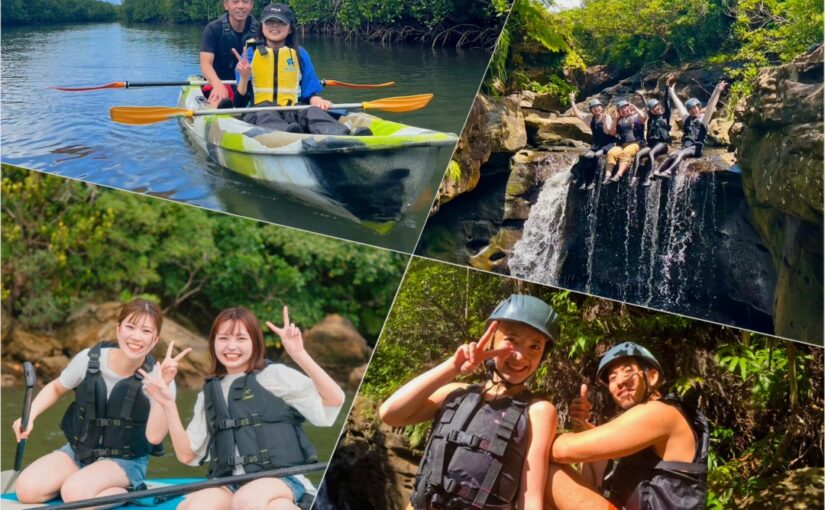 Winter Special SALE 【Iriomotejima / 1 Day】Paddle and jump into the water with great excitement! Mangrove SUP or Canoe & Powerful Canyoning Tour 《Photo Free & Pick Up & Drop Off Available》(No.97)開始時間9:00-15:30所要時間Approx. 6.5 hours21,700 yen →directional marker or indicator15,000suffix for names of swords, armour, musical instruments, etc.
Winter Special SALE 【Iriomotejima / 1 Day】Paddle and jump into the water with great excitement! Mangrove SUP or Canoe & Powerful Canyoning Tour 《Photo Free & Pick Up & Drop Off Available》(No.97)開始時間9:00-15:30所要時間Approx. 6.5 hours21,700 yen →directional marker or indicator15,000suffix for names of swords, armour, musical instruments, etc.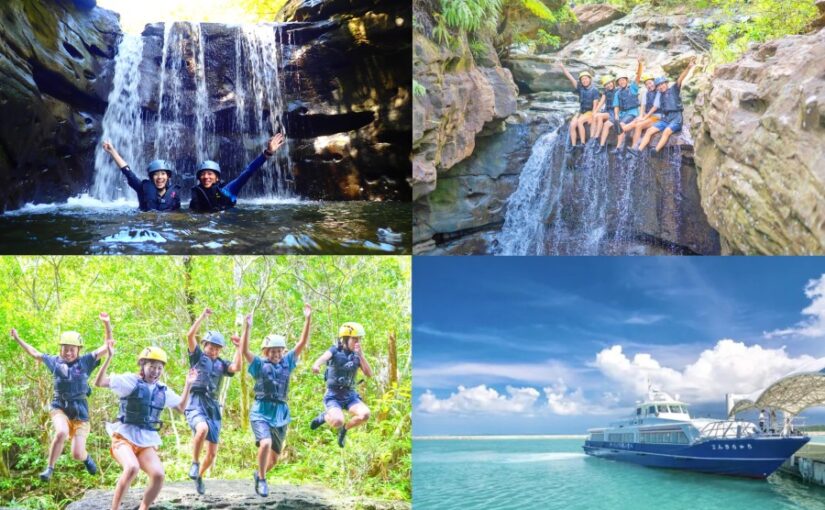 Tours Limited Discount】Iriomotejima⇆Ishigakijima Ferry Ticket included★Let's play in the natural athletic! Canyoning (Ravine Descending) Half Day Course★Free Photo (No.564)開始時間8:00-15:20 / 11:00-17:55所要時間Approx. 2 hours14,670 yen →directional marker or indicator13,000suffix for names of swords, armour, musical instruments, etc.
Tours Limited Discount】Iriomotejima⇆Ishigakijima Ferry Ticket included★Let's play in the natural athletic! Canyoning (Ravine Descending) Half Day Course★Free Photo (No.564)開始時間8:00-15:20 / 11:00-17:55所要時間Approx. 2 hours14,670 yen →directional marker or indicator13,000suffix for names of swords, armour, musical instruments, etc.
Boarding is required to Iriomote Island.
Buy your ferry tickets in advance!

To access Iriomote Island,Ferry boarding is required.The tour price does not include a ferry ticket, which must be purchased separately. Ferry tickets are not included in the tour price and must be purchased separately.

You can also purchase the tickets at the ferry terminal on the day of boarding, but if it is crowded, you will have to go to the counter in front of the ferry terminal.long lineYou can make reservations in advance to avoid waiting in line at the ticket counter. If you make a reservation in advance, you can board the ship smoothly without standing in line at the counter.
Click here to book ferry tickets.
Q&A about living things in Iriomote Island
The Iriomote wildcat is very wary and quite difficult to spot in the wild, but you can increase your chances of seeing it by taking an eco-tour with a professional guide.
On Iriomote Island, nature reserves have been established and observation activities are being conducted to protect animal habitats through eco-tours and other activities. In addition, activities to protect endangered species and research are being conducted.
The Iriomote wildcat inhabits the dense forests and mountainous areas of Iriomote Island. It is an endangered species and can only be seen in certain areas of the island.
summary
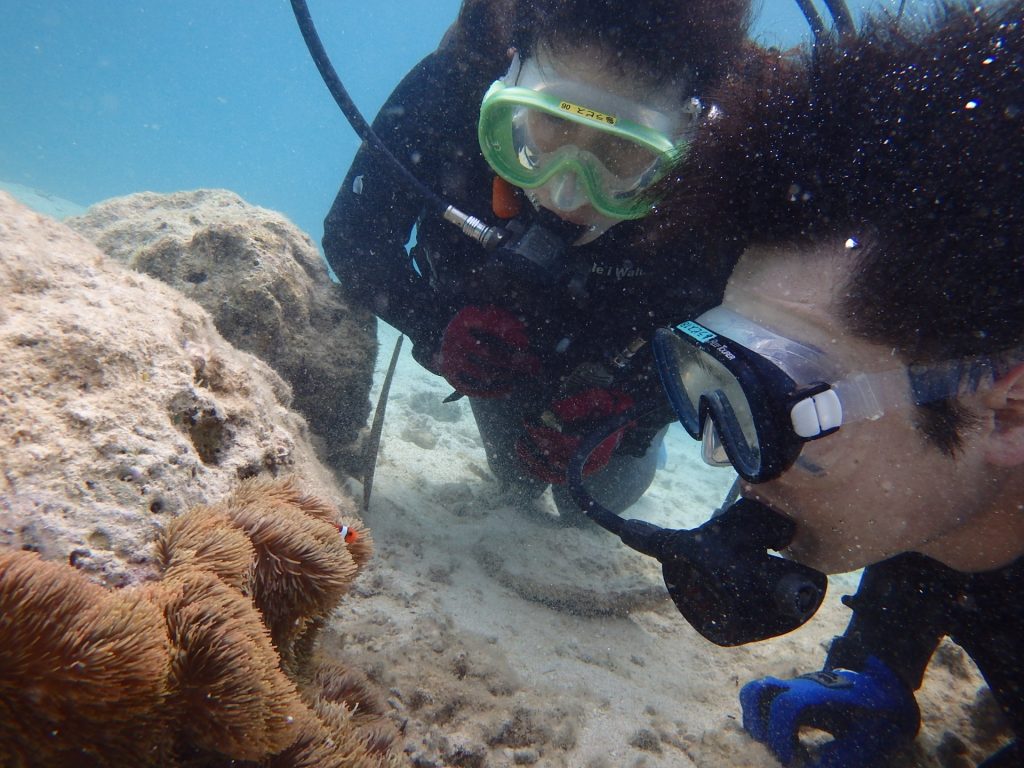
Iriomote Island is a treasure trove of nature and home to rare creatures such as the Iriomote wildcat and the coconut crab.
Enjoy precious encounters with wild animals in a rich natural environment♪
⬇︎Read the article in conjunction with ⬇︎
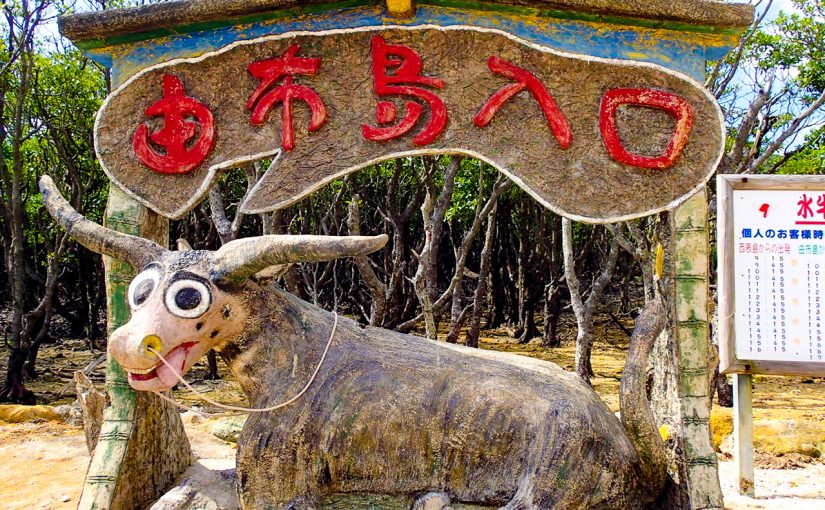 Let's enjoy the great nature by riding on a buffalo cart! Thorough description of Yubu Island, a popular sightseeing spot in Iriomote IslandContents1 What is the World Natural Heritage "Iriomote Island"? 2 Connection between Iriomote Island and buffaloes3 About Yubu Island4 About Yubu Island and buffaloes5 A great deal with Yubu Island sightseeing as a set! Recommended Tours5.1 ①Yaeyama Remote Islands Tour5.2 ②Pinaisara Falls [...]
Let's enjoy the great nature by riding on a buffalo cart! Thorough description of Yubu Island, a popular sightseeing spot in Iriomote IslandContents1 What is the World Natural Heritage "Iriomote Island"? 2 Connection between Iriomote Island and buffaloes3 About Yubu Island4 About Yubu Island and buffaloes5 A great deal with Yubu Island sightseeing as a set! Recommended Tours5.1 ①Yaeyama Remote Islands Tour5.2 ②Pinaisara Falls [...]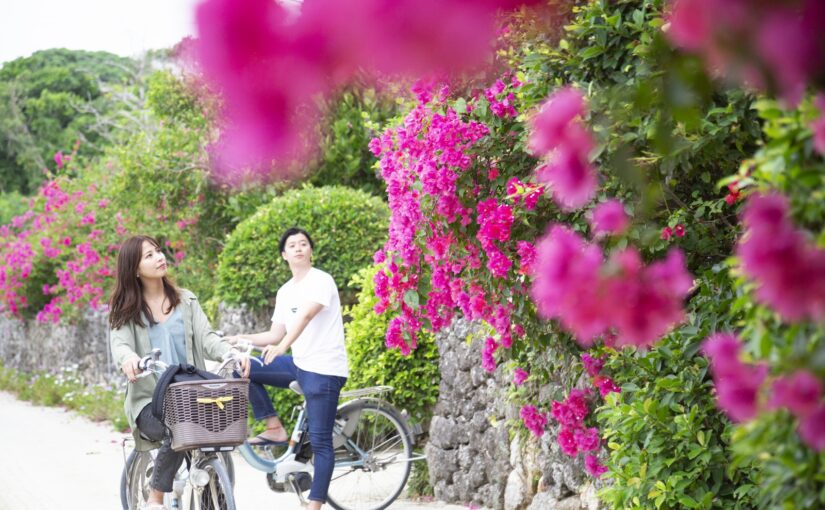 A must-see before your trip! Complete Guide to Iriomote Island's Floral AttractionsContents1 What kind of flowers can be found in Iriomote Island and when they are at their best? 2 By season! Calendar of the best time to see flowers in Iriomote Island2.1 Flowers in Iriomote Island in spring (March to May) 2.2 Flowers in Iriomote Island in summer (June to August) 2.3 Flowers in Iriomote Island in autumn (September to November) 2.4 Winter [...].
A must-see before your trip! Complete Guide to Iriomote Island's Floral AttractionsContents1 What kind of flowers can be found in Iriomote Island and when they are at their best? 2 By season! Calendar of the best time to see flowers in Iriomote Island2.1 Flowers in Iriomote Island in spring (March to May) 2.2 Flowers in Iriomote Island in summer (June to August) 2.3 Flowers in Iriomote Island in autumn (September to November) 2.4 Winter [...].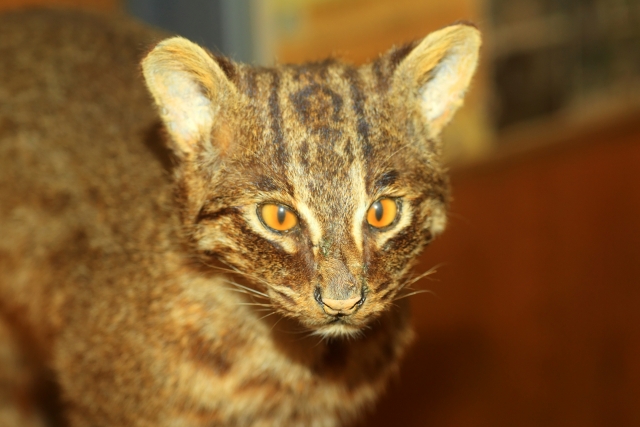 The Iriomote wildcat's ecology and characteristics are thoroughly explained by a local guide! What are the chances of seeing them?The Iriomote wild cat is a symbolic presence in Iriomote Island, which is home to numerous wild creatures. Here is some basic knowledge about the wild cat! Can you meet them when you visit the island!
The Iriomote wildcat's ecology and characteristics are thoroughly explained by a local guide! What are the chances of seeing them?The Iriomote wild cat is a symbolic presence in Iriomote Island, which is home to numerous wild creatures. Here is some basic knowledge about the wild cat! Can you meet them when you visit the island!
